



Working poverty is a reality worldwide. For many workers, a job does not provide a way out of poverty for their family. The COVID-19 pandemic has shown in stark relief the vulnerability of low-paid workers and made plain the consequences of economic vulnerability on human capital development. As this report highlights, this deepening of inequality presents an urgent threat to communities and economies.
A growing number of companies have expressly committed to achieving living wages in their supply chains, and the payment of a living wage is a membership requirement of a range of accountability organizations and initiatives in which businesses participate.
There is no universally agreed definition of a living wage as a concept and there is no universally accepted amount that defines such remuneration. But almost all living wage descriptions and definitions incorporate the idea that a living wage is a remuneration received for a standard workweek by a worker in a particular place sufficient to afford a decent standard of living for the worker and their dependents.¹
To this end, the United Nations Global Compact is encouraging companies to promote and provide a living wage as an essential aspect of decent work to ensure workers, families and communities can live in dignity. These commitments showcase the present impetus behind the agenda to improve wages in supply chains and are an important foundation to build on.
Improving wages for the lowest-paid workers in the supply chain has long been acknowledged as a pressing challenge for responsible multinational businesses to tackle. This report finds a rapid evolution in both commitment and action by business. A renewed clarity of focus on the reality of working poverty has seen a range of companies move beyond previous, circular debate, and proceed to concrete action. The past decade has seen a transformation in companies’ approach to a living wage, and in particular, overcoming two crucial obstacles.
First, the lack of consensus around the definition of a living wage: as the report points out, there is broad consensus around what constitutes a living wage, namely a wage which enables workers and their families to meet their basic needs. This objective is also central to the ILO’s call for an adequate minimum wage, further outlined in Convention no. 131 on Minimum Wage Fixing, which calls for minimum wage levels that take into account the needs of workers and their families as well as economic factors. Increasingly, credible information is publicly available on wages which would enable workers and their families to meet basic costs of living.²
Second, the complexity involved in addressing poverty wages in supply chains: wages are indeed determined by a range of factors, many of which are outside the control of any single enterprise. But complexity is not always complication, and recognition of complexity must not result in paralysis. The initial steps laid out here are achievable in any business, and many of the fundamental questions are straightforward, namely: do the prices my business pays to a supplier make it impossible for that supplier to pay a living wage to their employees? And beyond the price paid, what are the other factors to be considered in procurement decisions? Are my procurement colleagues aware that decisions they make can have a direct effect on the well-being of workers in supply chains?
There are expanding opportunities for companies to take meaningful action. Drawing from the lessons of activities to promote living wages in garment and agriculture supply chains, a number of tools and resources are now available to businesses to diagnose wage gaps, engage suppliers, and support activities to improve pay systems and foster social dialogue. Pioneering initiatives that have made these possible include the Action, Collaboration, Transformation (ACT) initiative, Fair Labor Association, Fair Wage Network, Fair Wear Foundation and IDH (the Sustainable Trade Initiative). This guidance aims to aggregate and complement these resources.
This report is not a blueprint for living wages in global supply chains. There are marked differences in the dynamics and structures between value chains and between labour markets. Rather, this report aims to draw out a strategic logic to support companies’ decision making, to devise their own realistic, integrated strategy on tackling low pay in supply chains and chart their way forward with a plan of concrete implementation actions that enable their commitments.
Change starts within the business, and firms seeking to promote decent wages in supply chains need to have their own house in order. Companies can leverage their own experience of achieving their commitment of paying all their direct employees — regardless of employment status — a living wage. Efforts on both fronts, ensuring a living wage for your own workforce and efforts to achieve a living wage for all workers in your supply chain, can go hand-in-hand. Improving wages in supply chains starts by identifying which levers are within the control of the business and making initial efforts on these. This will include:
Commitment to achieving improved wages in the supply chain for all workers as part of the companies’ business strategy: this will require a strong mandate from senior leadership.
Collecting data to assess the gap between current basic pay and living wage in supplier workplaces.
Developing an implementation plan with clear objectives, based on assessment of the scale of the gap between current wages and living wage, and an assessment of priority supplier markets to start working with (such as strategic suppliers in lowest-wage regions, or suppliers who are best positioned to achieve a living wage, creating demonstration effect for future engagement with other suppliers).
Consulting and collaborating with internal stakeholders (including buyers, legal, accounts, quality control) and external stakeholders, including workers’ representative organizations.
Engaging and supporting suppliers.
Adjusting purchasing practices and unit prices paid to enable payment of fair wages by suppliers.
Measuring and monitoring progress using a mix of quantitative and progress achievement metrics.
Market-based compensation
Most employers use a salary structure or pay scale to determine an employee’s compensation. The type of structure companies use depends on the industry, business size, location and employee classification, as well as collective agreements and local regulation. Market-based compensation approaches — where pay levels are based on market rates for similar jobs — are no guarantee that the paid wage level is above a living wage benchmark. In a low-wage labour market, a market-based wage rate (going rate) is likely below the living wage benchmark.
Fundamental here is the integration of living wage considerations into commercial practices. Concretely this means removing the downward pressure on wages that may be exerted by pricing and other purchasing practices. Wages cannot be the adjustment variable of commercial terms between buyer and supplier.
Beyond individual company efforts, this report identifies the need for collaboration. There is an emerging range of opportunities for businesses to engage in sector-wide collaboration with suppliers, trade unions, governments, NGOs and employers’ organizations. Progress requires collective work to influence change at scale, across entire industries. Collaborative solutions are required to aggregate buying power, to remove blockers to meaningful social dialogue and collectively negotiated wages, and to sustain the conditions for continued improvement of wages in global supply chains.
Key among these conditions is the existence of effective freedom of association and collective bargaining alongside transparent mechanisms for adequate national minimum wage levels set and revised by tripartite negotiation. The importance of adopting a multi-stakeholder approach needs to be underlined as all stakeholders play a relevant role in enabling the achievement of a living wage for all workers.
Working poverty in supply chains is at odds not only with companies’ values and those of their employees, but also with the potential to secure resilient supply chains and to grow consumer markets in emerging and developing economies. Wage income is pivotal to the achievement of Sustainable Development Goals (SDGs) 1 and 8 — No Poverty and Decent Work and Economic Growth — alongside a broader range of sustainable development objectives, including gender equality, the elimination of child labour and safe working conditions. Further, as more companies are publicly committing to achieving living wages in supply chains, and investors and stakeholders increasingly pay attention to the issue, there is a need to safeguard both intangible and tangible brand assets.
Advancing this agenda further requires real commitment from companies to assume their responsibilities and deploy their influence within value chains to ensure workers everywhere can realistically expect that their hard work will be rewarded sufficiently to support themselves and their families to a standard that is universally considered decent. This is, after all, one of their fundamental human rights.


Businesses increasingly recognize their critical role in promoting living wages in supply chains. Working poverty in supply chains is at odds not only with companies’ values and those of their employees, but also with the potential to secure resilient supply chains and to grow consumer markets. Wage income is pivotal to the achievement of many other sustainability and development objectives, including gender equality and the elimination of child labour (see graphic in section 2.2). Further, as more companies are publicly committing to achieving living wages in supply chains, and investors and stakeholders increasingly pay attention to the issue, there is a need to safeguard both intangible and tangible brand assets.
While ensuring payment of living wages in supply chains is often seen as a cost, it can constitute an important investment. Beyond fulfilling a duty of care, ensuring the payment of decent wages to supply chain workers translates into an investment in human capital that can bring a range of returns: from direct returns to suppliers in terms of reduced absenteeism, increased retention and motivation, through to indirect returns for buyers in terms of supply chain resilience and quality, as well as risk management.
An “adequate standard of living” and “just and favourable conditions of work” are universally recognized human rights. The Universal Declaration of Human Rights (Article 25) and the International Covenant on Economic, Social and Cultural Rights (Article 7) together make clear the inextricable link between employment and an adequate standard of living, and present business with an opportunity to step up to respect these rights through, for example, the provision of a living wage. The UN Guiding Principles on Business and Human Rights (UNGPs) outline the corporate responsibility to respect human rights, calling on business to both avoid infringing on the human rights of others and address adverse human rights impacts with which they are involved. The UNGPs state that businesses should conduct ongoing human rights due diligence to identify, prevent, mitigate and account for how they address their adverse human rights impacts. Acting on wages where low pay is an identified risk or impact on the enjoyment of workers’ rights — including in their supply chains — as a result of a human rights due diligence process is one way business can align with the UNGPs. Furthermore, as part of their responsibility to conduct human rights due diligence, companies should use their leverage and take steps in their supply chain to promote living wages where low pay is an identified risk.
Shortfalls in state obligations to realize the rights to an adequate standard of living and just and favourable conditions of work present a salient risk for business. Working to improve wages evidently implies a critical role for state actors in establishing adequate minimum wages and providing a framework for social dialogue based on respect for internationally recognized rights of freedom of association and collective bargaining. However, according to the ILO’s latest Global Wage Report 2020/21, in many sourcing economies, minimum wages are inadequate, absent, infrequently revised or not effectively applied, and labour market governance fails to ensure a role for social dialogue. While 90% of ILO Member States have minimum wage policies in place, an estimated 327 million wage earners are paid at or below the applicable hourly minimum wage. This figure represents 19% of all wage earners and includes 152 million women. Further, only 54% of countries with minimum wages adjusted their minimum wages at least every two years.
Eradicating poverty in all its forms is an indispensable requirement for sustainable development. More than 700 million people worldwide still live in poverty.
Work is the key route to escape poverty. However, a job alone is not a guarantee of decent living conditions. The ILO reports that 8% of the world’s workers are classed as ‘working poor.’ The COVID-19 pandemic has brought the consequences of economic vulnerability into plainer view across the world.
Further, at a global level, the ‘labour share’ (the proportion of national income allocated to wages) has been in decline for three decades. Wage incomes for workers in global supply chains reflect a long-term global trend of increasing disparity, and a continuous decline in the wage share, even in emerging economies with rapid growth.
These trends appear to reflect a disconnect between productivity and wages. Constrained returns to labour and unequal income distribution have led to a growing phenomenon of working poverty.
For multinational companies, the significance of fostering sustainable and resilient supply chains is acute. This is reflected in the vocal support for the SDGs across much of the business community. Companies achieving living wages in their supply chains would directly advance Goals 1, 5, 8 and 10 and contribute materially to the achievement of several other Goals. Indeed, by committing to achieving living wages in supply chains, companies can reinforce and catalyse a much wider range of sustainable development and human rights commitments.
The root causes of labour risks such as child labour, forced labour and unsafe working conditions are often linked to poverty and vulnerable working arrangements.
 Wages as an accelerator for achieving the SDGs
Wages as an accelerator for achieving the SDGs
Goal
Directly Enabled
Goal
Indirectly Enabled
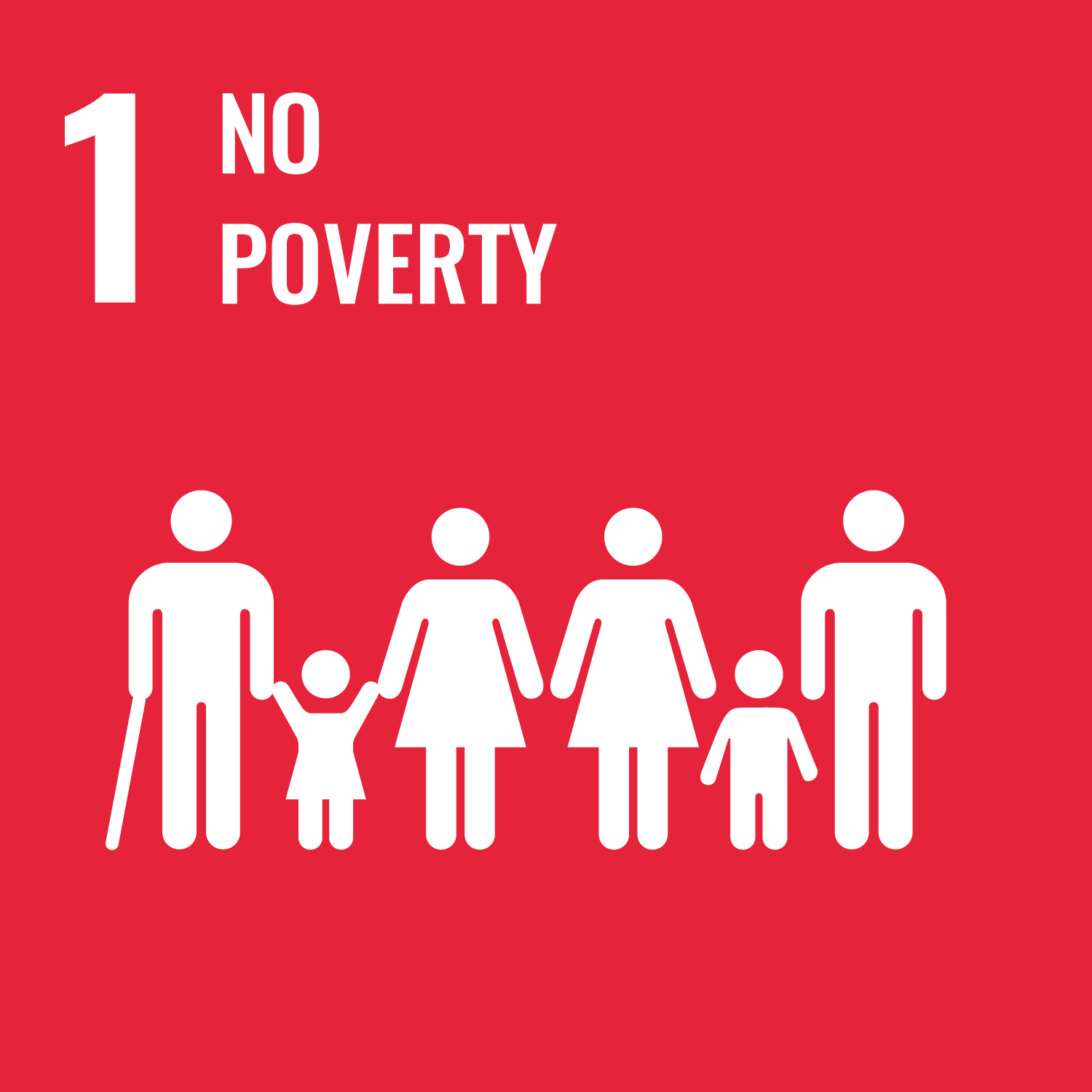
No Poverty
Wages increase the purchasing power of households, reducing
income insufficiency for the satisfaction of basic needs.

Zero Hunger
Wages increase the purchasing power of households,
reducing income insufficiency for the satisfaction of basic needs, specifically food needs, and ensure safe,
nutritious and sufficient food all year round.
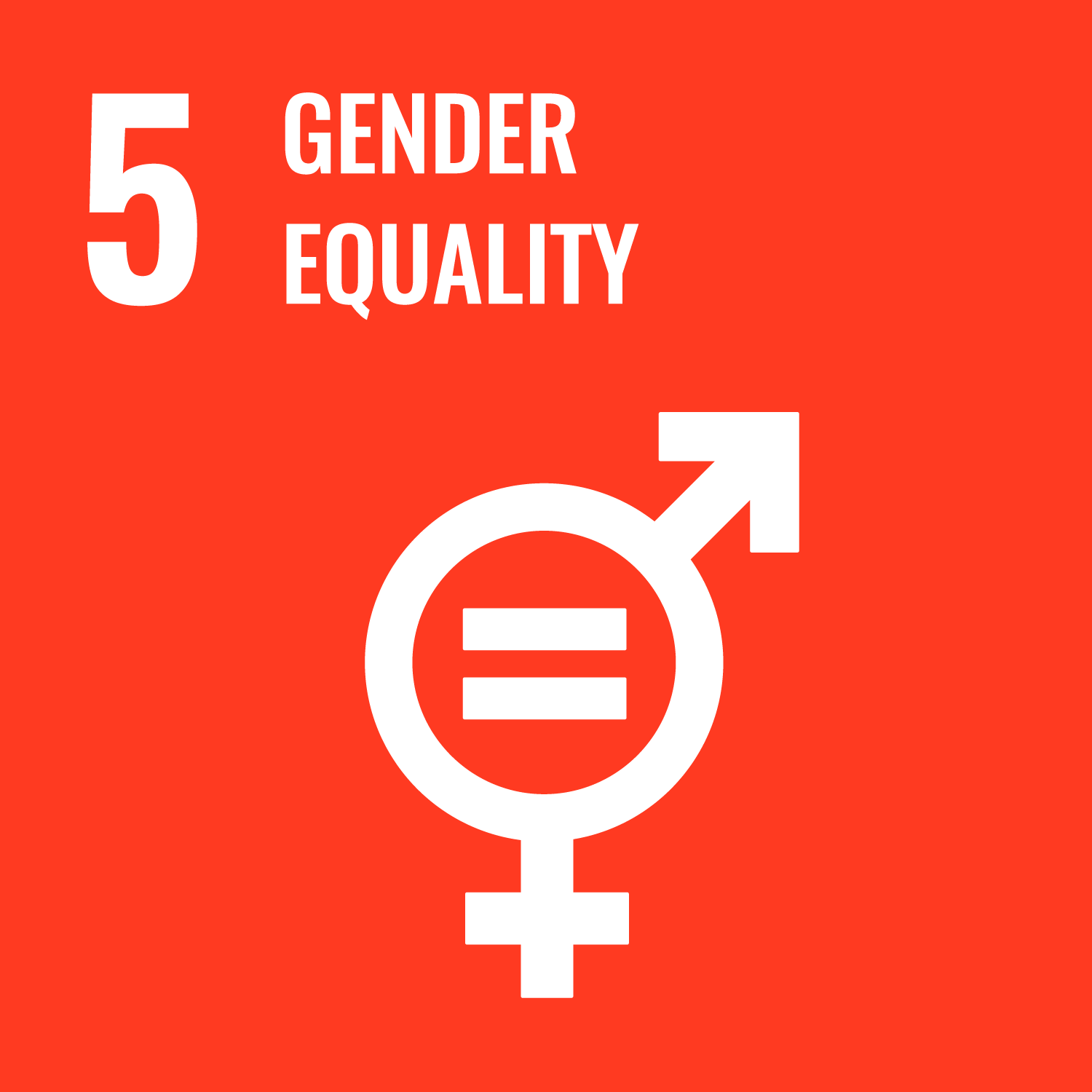
Gender Equality
Many of the lowest-paid people are women; ensuring these women
are paid a decent salary, in line with men doing work of equal value, tangibly contributes to women’s economic
equality,
participation and empowerment.

Good Health and Well-being
Improved purchasing power through enhanced wages
enables workers and their families to meet their nutritional needs, to avoid intense and long hours of work, and to
invest in their human capital.
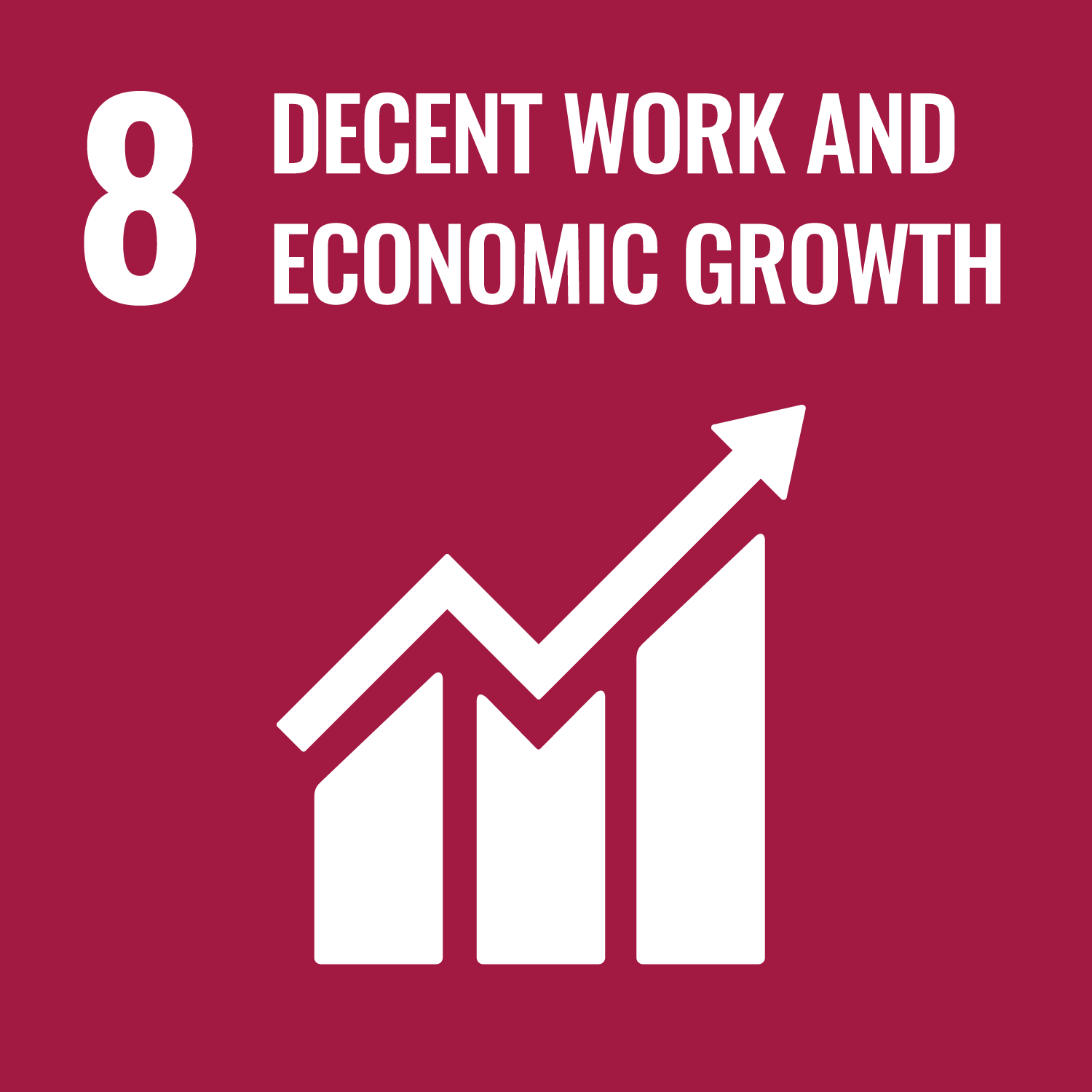
Decent Work and Economic Growth
A decent wage, determined through
mechanisms underpinned
by social dialogue, is core to the achievement of decent and productive work for all. Inclusive and sustainable
economic growth requires fair returns to labour, driving domestic demand.

Quality Education
Improved wages can provide households with sufficient means for parents to send their children to school.
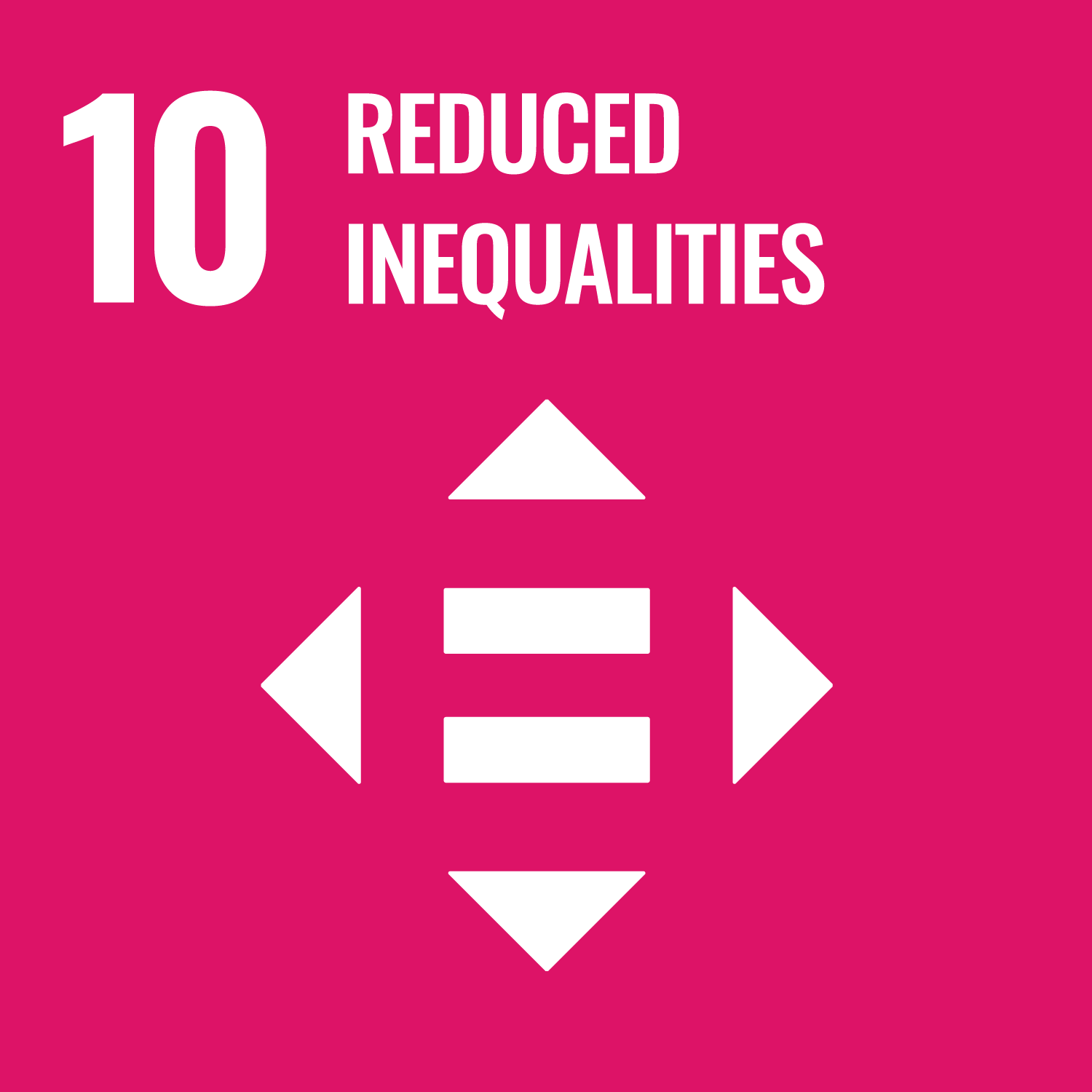
Reduced Inequalities
National wage, industrial relations and social protection
policies are
key to progressive reductions in inequality within and between countries. Boosting wage incomes for the lowest-paid
is a powerful driver of social, economic and political inclusion for all.

Clean Water and Sanitation
Improved purchasing power through enhanced wages enables workers and their families to ensure access to safe and
clean water and sanitation.

Affordable and Clean Energy
Improved purchasing power through enhanced wages enables workers and their families to ensure access to affordable
and clean energy.
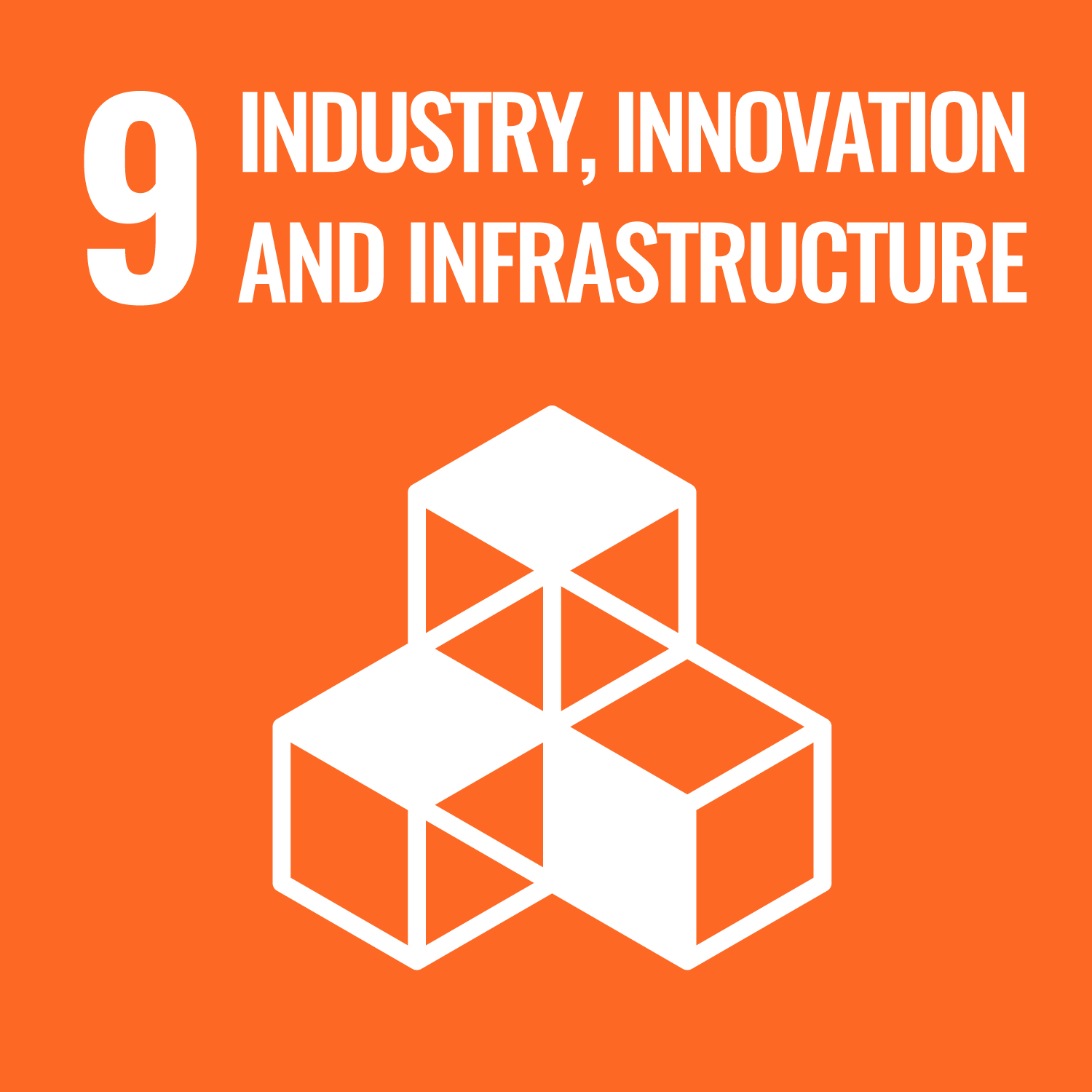
Industry, Innovation and Infrastructure
Decent wages can drive inclusive and sustainable industrialization and raise industry’s share of employment and
gross domestic product.
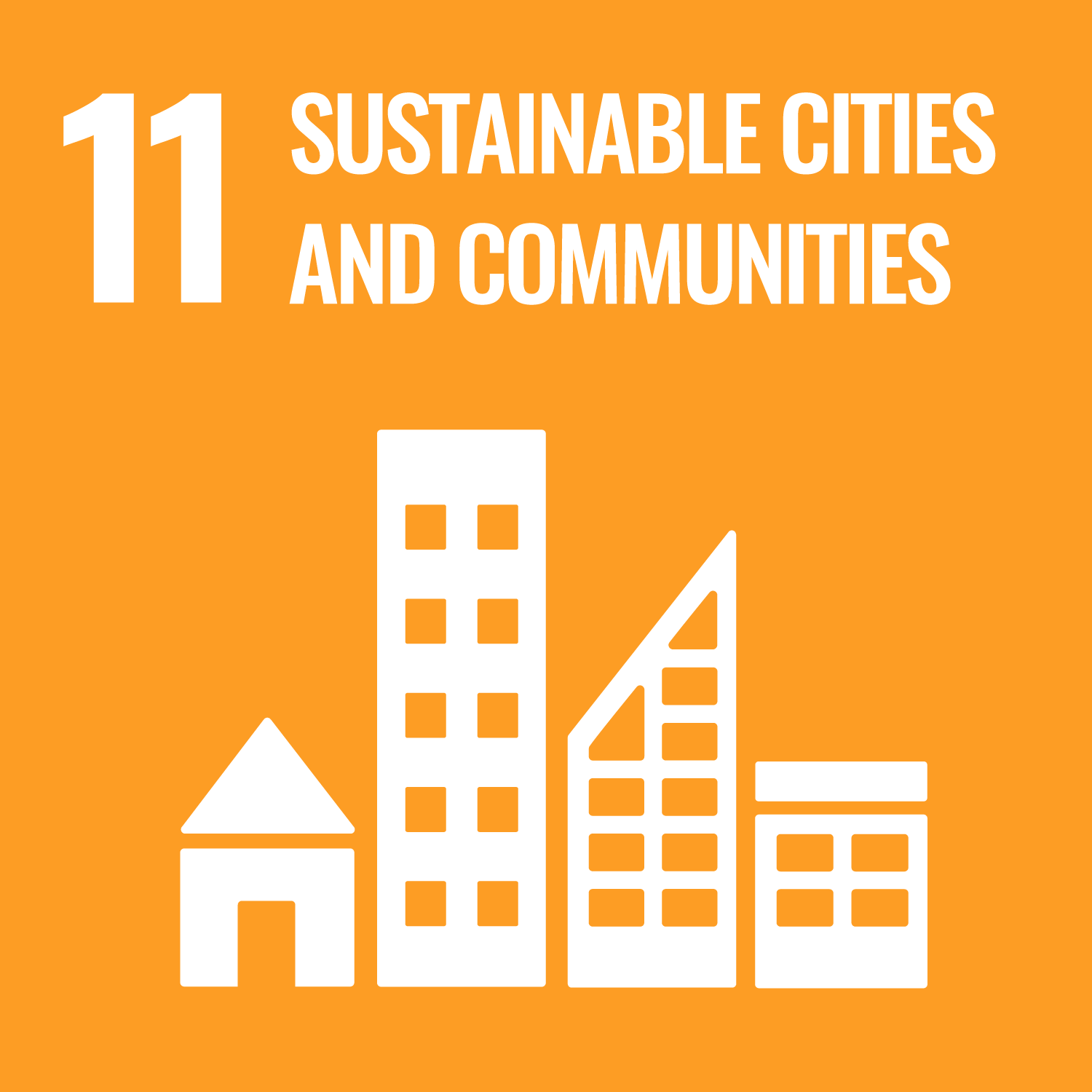
Sustainable Cities and Communities
Improved purchasing power through enhanced wages enables workers and their families to ensure access to adequate
housing and mobility within their communities.
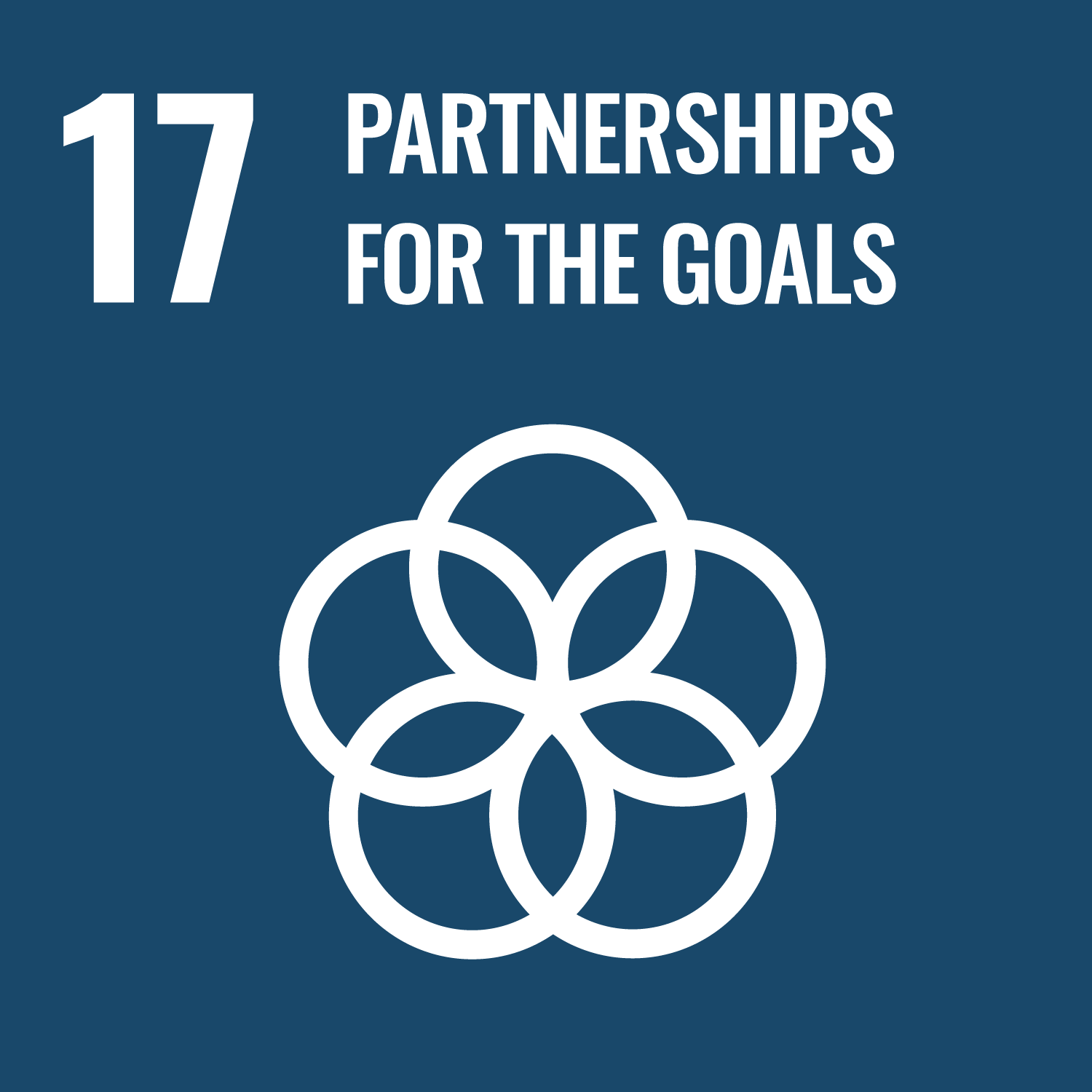
Partnerships for the Goals
The coordination platforms and initiatives required to address supply chains wages are a leading example of new
forms of partnership required to meet the SDGs. Dialogue and coordination with trade unions to support effective
bargaining on wages across sectors should be seen as a key enabler towards this goal.
Goal
Directly Enabled
Goal
Indirectly Enabled

No Poverty
Wages increase the purchasing power of households, reducing
income insufficiency for the satisfaction of basic needs.

Zero Hunger
Wages increase the purchasing power of households,
reducing income insufficiency for the satisfaction of basic needs, specifically food needs, and ensure safe, nutritious and sufficient food all year round.

Gender Equality
Many of the lowest-paid people are women; ensuring these women
are paid a decent salary, in line with men doing work of equal value, tangibly contributes to women’s economic equality,
participation and empowerment.

Good Health and Well-being
Improved purchasing power through enhanced wages
enables workers and their families to meet their nutritional needs, to avoid intense and long hours of work, and to invest in their human capital.

Decent Work and Economic Growth
A decent wage, determined through mechanisms underpinned
by social dialogue, is core to the achievement of decent and productive work for all. Inclusive and sustainable economic growth requires fair returns to labour, driving domestic demand.

Quality Education
Improved wages can provide households with sufficient means for parents to send their children to school.

Reduced Inequalities
National wage, industrial relations and social protection policies are
key to progressive reductions in inequality within and between countries. Boosting wage incomes for the lowest-paid is a powerful driver of social, economic and political inclusion for all.

Clean Water and Sanitation
Improved purchasing power through enhanced wages enables workers and their families to ensure access to safe and clean water and sanitation.

Affordable and Clean Energy
Improved purchasing power through enhanced wages enables workers and their families to ensure access to affordable and clean energy.

Industry, Innovation and Infrastructure
Decent wages can drive inclusive and sustainable industrialization and raise industry’s share of employment and gross domestic product.

Sustainable Cities and Communities
Improved purchasing power through enhanced wages enables workers and their families to ensure access to adequate housing and mobility within their communities.

Partnerships for the Goals
The coordination platforms and initiatives required to address supply chains wages are a leading example of new forms of partnership required to meet the SDGs. Dialogue and coordination with trade unions to support effective bargaining on wages across sectors should be seen as a key enabler towards this goal.
Critically, viewing improved wages through an SDG lens reinforces the importance of strengthening social dialogue to ensure meaningful change. As highlighted in the 2020 Flagship Report from the joint ILO/OECD Global Deal for decent work and inclusive growth, several Global Deal business and civil society partners have made commitments towards achieving Goal 1 to lift people out of poverty through the promotion of living wages through social dialogue. Global Deal’s Declaration of Support agenda highlights social dialogue as a vital means of achieving decent work through reduced inequities, increased productivity and sustainable economic growth.
Experience from a range of companies in agriculture, garments and other fast-moving consumer goods (FMCG) supply chains suggests that there are several broad business benefits which can result from improvements to wages for lowest-paid earners in supply chains. Fundamentally, all parties stand to gain from a situation where workers are more economically secure and less distressed by financial concerns, the need to work excessive overtime or hold down a second job.
There is firm evidence of the positive business effects of living wage payment in direct workforces. For example, in 2017, Cardiff Business School found that 93% of UK Living Wage Employers reported that they had experienced some form of benefits from accreditation with the UK Living Wage Foundation. These were mostly related to reputational effects, though many firms also reported a greater ability to recruit and retain workers, lower absenteeism and higher productivity. Similar benefits were found by Middlesex University Business School and University of Liverpool Management School when looking specifically at small and medium-sized enterprises (SMEs) in the UK, and in large employer case studies conducted by the University of Strathclyde.
There are similar, but distinct, business rationales for buyers and suppliers to address poverty wages in supply chains (see table below). For buyers, demonstrating commitment and progress on supply chain wages may be crucial either to membership requirements of initiatives and platforms or to public sustainability commitments: this is about demonstrating real action on a pressing agenda. Beyond this, there are significant reputational, regulatory and commercial drivers from investors, consumers and regulators. Returns for buyers can accrue directly — in terms of driving quality supply, effective risk management and reputational gains — and indirectly — through promoting and enacting necessary process and systems changes which improve business outcomes: for instance, consolidating and shortening supply chains may be necessary to living wage efforts but can bring broader return in terms of trading relationships and resilience of supply.
These returns are increasingly recognized as real by global investors. For instance, Platform Living Wage Financials (PLWF) brings together a group of institutional investors with combined assets of €725bn who encourage and monitor investee companies’ actions to address the non-payment of a living wage in global supply chains. Further, the Dow Jones Sustainability Index (DJSI) has recently introduced new requirements relating to the living wage. This signals an emerging need for businesses to understand the extent of low pay in their supply chains and to be prepared to show steps taken to close the gap.
For suppliers, there are several ‘broad business benefits’ that can result from improvements to wages for lowest-paid earners in the workforce, and there can be significant organizational gains derived from moving to a more strategic people management approach. Specific areas of positive return can include:³
Reduced staff turnover and absenteeism, resulting in reduced recruitment, and developing a more stable and skilled workforce. Attracting and retaining workers is a key factor in competitive advantage. Better wages can contribute to higher worker satisfaction, higher retention rates of skilled workers, lower recruitment and absenteeism costs, better quality management and a safer workplace.
Reduced training costs, which occurs when worker retention is high, there are fewer induction courses and basic up-skilling courses required and workers with higher skills can give on-the-job support to newer ones.
Output improvements in productivity and quality, reflecting improved worker motivation and engagement; also, workers who are more economically secure are less distracted by financial concerns or the need to work excessive overtime or hold down a second job. Addressing workers’ wage concerns can also minimize disruption caused by industrial action driven by low pay.
Access to market and reputation, spawning more positive association with customers and workers (including future employees) and ensuring access to higher-value markets and buyers and meet the demands of other customers, investors and the community at large. (Improved wages also support the economic development of the community around the workplace.)
Further, these benefits are amplified when taking an approach to wages which reinforces the development of improved human resource management systems and forms of social dialogue and worker engagement, which themselves bring gains for workforce and enterprise alike. For instance, addressing wages holistically can enable supplier companies to better control excessive overtime without negatively impacting workers’ financial well-being and employee turnover.
Business drivers for buyers and suppliers to invest in decent wages
Multinational buyers
Suppliers
Growth and Resilience
Securing resilient supply for the long term
Catalyst toward better managed supply chains
Boosting purchasing power, market inclusion
Securing skills for future enterprise development
Access to markets through enhanced profile
Innovation and cohesion through enhanced motivation
Value creation
Fostering supplier upgrading (quality, productivity)
Brand consolidation/intangible asset protection
Forcing smarter, more holistic decision-making
Strengthening human capital:
recruitment, retention and attendance
Upgrading skills, enabling innovation
Driving up quality and productivity
Risk management
Reputational risk management
Increasing investor attention (e.g. PLWF)
Demonstrable contribution to broader SDG objectives
Reputation and prestige with workers and community
Enhanced B2B profile
Compliance with code of conduct requirements
A significant number of companies have already committed to paying a living wage to their direct workforce. A commitment to ensuring that direct employees receive a wage that ensures them a decent standard of living is both a logical and ethical prerequisite to addressing supply chain wages. There is also real scope to share the practical experience and solutions developed in ‘getting your own house in order’ when embarking on efforts to address poverty wages in supply chains. This implies a key role for a company’s own Human Resources and Reward teams in translating supply chain commitments into action.
A growing number of companies are committed to enabling living wages to be paid within their supply chain. There is already dynamic momentum behind the idea to improve wages in global production systems. A sample of companies that have publicly expressed their commitment to achieving living wages in global supply chains is included below. Increasingly, these commitments are backed by time-bound targets.
Organization
Description

Everyone who directly provides goods and services to Unilever will earn at least a living wage or a living income by 2030.

By 2030, we will ensure that 100% of our strategic suppliers’ employees will be paid at least a living wage, covering their basic needs and those of their dependents, calculated in line with best practices.

By 2025, Schneider Electric commits that 100% of its strategic suppliers provide decent work to their employees. This includes payment of fair wages.

In 2017, H&M committed to the ACT accountability and monitoring framework. Our progress against the five commitments will be measured annually from 2021 onwards.

Inditex is committed to enable the provision of a living wage to factory workers in its supply chain. This commitment is reflected in the company’s Code of Conduct and its “Workers at the Center” Strategy, of which their Global Framework Agreement with IndustriALL Global Union and work with ACT are critical elements.


The need for companies to consider living wages as a crucial aspect of decent work has gained momentum in recent years with a number of organizations and companies taking concrete actions to that effect. There are a number of lessons and experiences to draw upon, notably from the garments and agricultural value chains. What we know now is that a number of factors combine to keep wages low and individual initiatives are unlikely to make significant progress. In particular:
Companies buying from supply chains need to coordinate between themselves and collaborate/partner with industry peers and other buyers, suppliers, governments, workers or their representatives and other relevant organizations, including in discussions related to setting adequate national minimum wages.
Promoting and facilitating social dialogue is key for companies to understand the root causes of low wages and effectively ensure workers are paid a living wage.
Many global supply chains rely on a business model which benefits from maintaining low wages and inadequate regulation and enforcement. This is partly reflected in the dynamics of trade and manufacturing during a relatively rapid transition to global sourcing over the past four decades. Asymmetries of power in global supply chains and information mean that, in reality, some actors are functionally dependent on others. Suppliers typically have fewer options, and less decision-making flexibility, than their buyers. (The exception here is, potentially, the electronics segment, which has seen the aggregation of supplier control.) Workers remain largely absent from decision-making.
Multinational buyers, therefore, have a key role to play in unlocking this situation. The actions and decisions of multinational buyers can have a significant impact on the working conditions, and broader livelihoods, of supply chain workers. Frequently, the wages paid to supplier workforces — seen as a more flexible element of production cost — serve to absorb commercial pressures coming down the supply chain.
Prices paid to suppliers must be considered a central lever for achieving living wages in global supply chains. A sustainable improvement to supply chain wages requires that the means to pay for it are embedded within commercial agreements. Buyers will in many cases need to be prepared to pay more. While gains in efficiency and value can be achieved through supporting suppliers to improve productivity through technology and skills development, it is neither realistic nor desirable to expect all the gains to come from productivity enhancements. Suppliers and international workers’ rights advocates alike expect multinational buyers to bear some of the cost of paying a living wage.
And the structure of many global supply chains means that addressing the root causes also requires coordination between buyers. Complex, disparate supply networks with multiple intermediaries and multiple companies purchasing from a single supplier logically, and mathematically, require a high degree of buyer coordination to address wages.
Experience to date has illuminated the need to consider the practicalities of implementing living wage commitments, including the importance of social dialogue at enterprise and sectoral level, and the need for coordinated efforts which can increase ‘reach’ towards major blockages including national minimum wage setting. Living wage benchmarks have been important in raising awareness of living wage gaps, and as a diagnostic in calculating the wage gap and identifying risks of low wages. Yet much of the real work lies in addressing root causes that give rise to low wages, including purchasing practices, poorly functioning national and sectoral minimum wage-setting and industrial relations systems, lack of (well-functioning) social dialogue between workers and employers, and supplier-level pay determination and HR management systems.
Understanding how to raise wages sustainably to a level that meets living costs requires an understanding not only of wage levels but of wage determination and wage systems. This view is reflected in the Fair Wage Network (FWN) approach which emphasises 12 dimensions of fair wages.
Fair Wage Approach
Wage levels are dependent of the conditions under which the work takes place (hours, intensity, skill level) as well as on underlying, interlinked economic and institutional drivers and constraints. This view is reflected in the Fair Wage Network (FWN) approach which emphasizes 12 dimensions of fair wages. These are:
Timely, regular payment of wages
Paying wages that sustain minimum acceptable living standards
Minimum wage
Prevailing wage
Payment of working hours at legal rates
Pay (and benefits) systems at workplace level
Communication and social dialogue
Wage discrimination and wage disparity
Real wages (relative to inflation, changes in cost of living)
Wage share (workers’ share in profit growth)
Wage costs
Work intensity, technology and up-skilling
Source: FWN (2012)
Many of the early examples of business-led efforts to improve supply chain wages were in garments and agricultural value chains, but key learnings from both can be applicable to all sectors. In recent years, there has been a rapid development of tools and approaches rooted in the lessons from these pioneering efforts. These include:
A proliferation of benchmarking tools and growing open-source knowledge base on wages and living cost estimates in production countries (Global Living Wage Coalition, Wage Indicator Foundation).
Multi-stakeholder initiatives working to consolidate processes to enable commercial buyers to support wage improvements (IDH, Rainforest Alliance).
Development of tools and approaches to integrating living wage considerations into purchasing practices and commercial negotiations (ACT, UN Global Compact, Fair Wear Foundation).
Agreement between global buyers and retailers and trade unions to transform the garment, textile and footwear industry and achieve living wages for workers through collective bargaining at industry level linked to purchasing practices (ACT).
The examples of leading initiatives to improve wages in supply chains have revealed new considerations that serve as important lessons for companies implementing living wages in supply chains.
Organization
Description
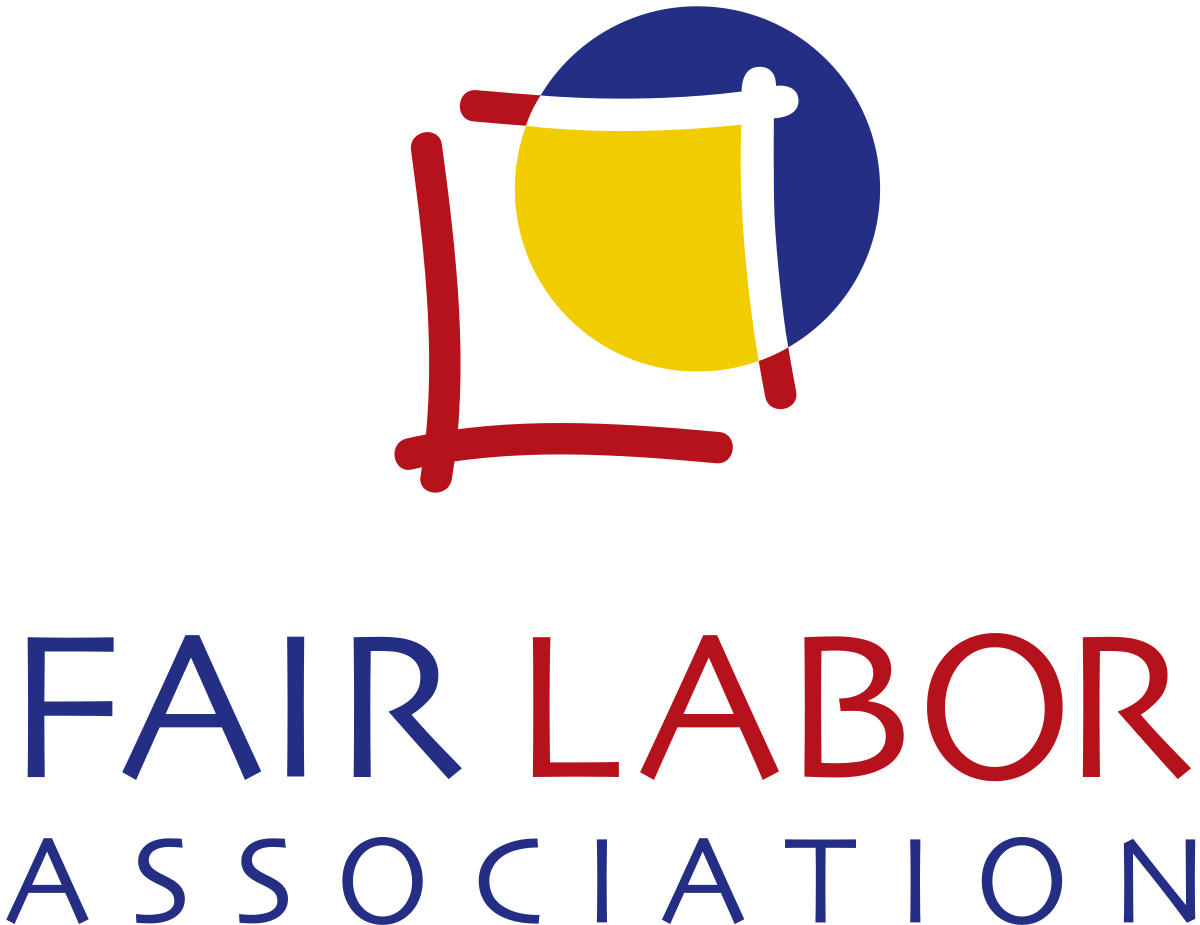
The Fair Labor Association (FLA) is a multi-stakeholder initiative that holds businesses in the apparel, footwear, and agricultural sectors accountable for upholding human rights and improving working conditions in their supply chains. In 2011 the FLA recognized fair compensation and living wage as a fundamental workers' right within its Code of Conduct. Since then, the FLA has developed standards, tools, and implementation approaches for its members to improve wages in factories and farms.
The FLA has developed a scalable methodology for measuring average worker wages in a factory and an online dashboard to quantify the living wage gap using internationally recognized wage benchmarks. With these tools, a company can a) identify what workers in their own supply chain are earning; b) measure the living wage gap in individual factories; and c) visualize wage progress over time. These tools are now available to companies outside of the FLA.
The FLA's tools are just one part of their 2020 Fair Compensation Strategy, which requires each FLA member company to develop an actionable blueprint for improving wages in their own supply chain. These fair compensation blueprints must be data driven and include engagement with workers, union representatives and civil society. To be accredited by the FLA a company must also demonstrate responsible sourcing and production practices. Embedded in FLA accreditation is the requirement that a company's sourcing, costing, design, and sustainability teams — as well as top management — are all working towards a common goal of living wage for workers.

Building on years of work with stakeholders to understand how a living wage can be implemented within standards and certification systems, two of the largest standards organizations — Fairtrade International and the Rainforest Alliance — have taken major steps towards a large-scale roll-out of activities designed to close the living wage gap.
Following their merger with UTZ in 2019, the Rainforest Alliance has become the largest private voluntary standards system with a living wage requirement. In 2020, the new Rainforest Alliance published their updated standard, which overhauled their approach to implementing living wages. The new system systematically incorporates the IDH Salary Matrix V.2 into the assurance process and a suite of supply chain instruments such as the Supply Chain Contributions for Living Wage Payment have been introduced. These tools provide a structure to facilitate companies and producers to collaborate towards achieving living wages.

In December 2020, Fairtrade International announced a new “base wage” for banana workers, set at 70% of the net (take-home) living wage level in the industry, even if the minimum wage is lower. In addition, to support the shift towards a living wage, Fairtrade’s Revised Standard provides that up to 30% of the Fairtrade premium must be paid out as a cash bonus to hired workers.
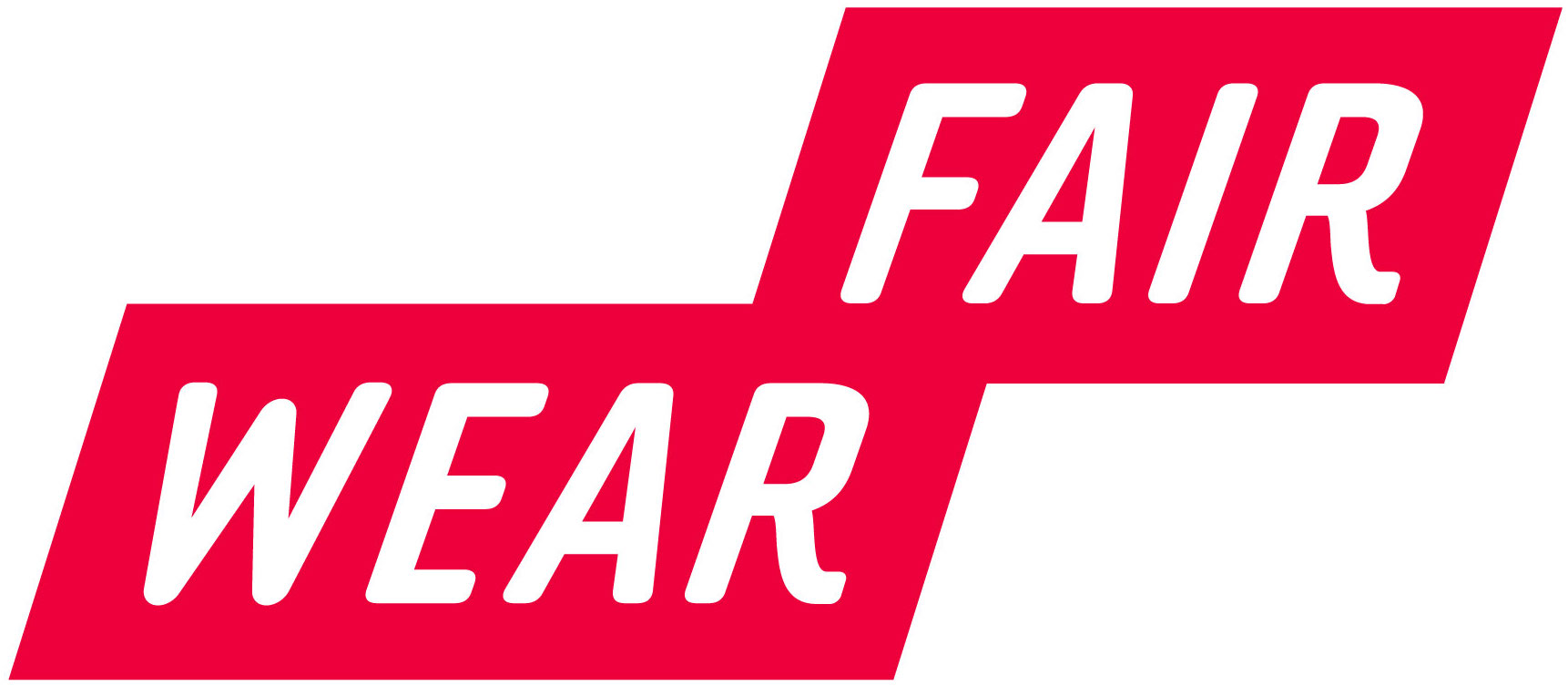
Fair Wear Foundation, a multi-stakeholder organization working to promote social sustainability in the garment industry has developed a suite of open-source tools and approaches to integrating living wage considerations into purchasing practices and commercial negotiation.
Labour Minute Calculators and other tools help companies, suppliers, trade unions and others understand how increasing wages will affect product costs.
Fair Wear’s Wage Ladder tool allows members to visualise the gap between wages paid at any factory and a range of wage benchmarks reflecting local costs of living.
Fair Wear’s approach recognizes the realities faced within in the sector, namely the need to ensure industries remain competitive, the challenge of shared responsibility among different buyers and the logistical challenge of complex supply chains and the risks of compounding price escalation. Fair Wear’s tools simplify some off these dynamics by encouraging companies to understand their inputs into value chains and to be pragmatic about overcoming challenges.
Various organizations have developed living wage benchmarking tools and guidance to support companies to overcome some of the first technical hurdles concerning raising wages. The key trend is towards harmonization of approaches to working on wages, consolidating growing open-source knowledge bases on wages and living cost estimates in production countries and linking them to shared definitions, comparable data gathering tools and resources and linking these technical resources with common platforms where different companies can strategize on how to collectively achieve progress in supplier industries in which they have a shared interest.
There are a number of organizations that provide living wage data and resources for benchmarking across multiple countries, including the Global Living Wage Coalition, Fair Wage Network, Wage Indicator Foundation and Fair Wear Foundation.
Organization
Description
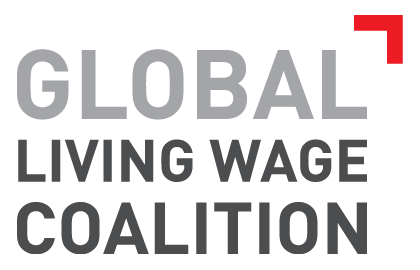

The Global Living Wage Coalition brings together Fairtrade International, the Rainforest Alliance, and Social Accountability International (SAI), in partnership with ISEAL and international living wage experts Dr. Richard Anker and Ms. Martha Anker. The initiative has completed living wage benchmark studies for 33 country/industry areas using a methodology developed by labour experts Richard Anker and Martha Anker. The method relies on primary data gathering on living costs as well as comprehensive analysis of living conditions and wage setting contexts to produce robust, localised living wage estimates.
The new ‘Reference Value’ methodology, launched in 2020, affords an opportunity to rapidly scale up the initiative, producing living wage benchmarks which are not location-specific using a desk-based quantitative methodology.
Reports including the calculated living wage benchmark and supporting context information are available for free on Global Living Wage Coalition online portal.

The Wage Indicator Foundation offers an extensive online database of minimum wages, living wage estimates and data on actual wages paid to workers according to country, industry and skill-level. “Wages in Context” provides key context considerations alongside the headline figures.
Data is gathered using the Wage Indicator Cost of Living web and smartphone app which is designed to allow users to input the prices of various goods to calculate a living wage. This is supplemented by data from Numbeo, the online cost-of-living survey platform.
Separate living wage estimates are provided for a one-person household, a standard household of two adults and two children, and a typical family in the target area.

The Fair Wage Network is an initiative to promote and support member companies implement fair wage practices along the ‘Fair Wage Approach’ (see Fair-wage.com), through a fair wage assessment and certification process. The initiative has also developed a comprehensive global database of living wage estimates accessible to member companies by secure log-in, which reveals what existing credible living wage benchmarks are potentially applicable to a given target industry along with an ‘aggregated’ living wage estimate on each of nearly 200 countries complemented by local living wage benchmarks obtained from surveys in more than 1500 regions/cities, incorporating existing estimates with and providing the option to scale according to household size and the number of wage earners in a family.
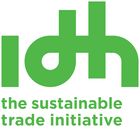
The Sustainable Trade Initiative (IDH) has developed a Roadmap on living wages and suite of technical solutions to support companies in implementing their commitments to close the living wage gap through a supply chain approach. IDH has provided a platform for collaboration on key industries such as tea, bananas and garments and in doing so has been working to promote a common approach for commercial actors and standards systems to work on living wages in supply chains.
IDH has developed a set of criteria to help actors to recognize what features a credible, reliable living wage benchmark should have and have set up a new process to ‘recognize’ benchmarks that meet these criteria. The process has already recognized Wage Indicator, the Fair Wage Network and the Global Living Wage Coalition/Anker methodologies as meeting all criteria.
The IDH Salary Matrix for a Living Wage V.2 is a tool designed to collate the necessary information from a target workforce to support the comparison of total remuneration (wages, bonuses and in-kind benefits) with credible living wage benchmarks, and this is closely aligned with the approach set out in the Ankers’ Living Wages Around the World – Manual for Measurement, intended to allow a fair comparison between a benchmark calculated using this methodology and the data collected using the tool.
IDH’s Base Report for Auditors verifying living wage gaps provides a template for information collection and guidance on what to look for in terms of potential cash and non-cash compensation for workers.
In March 2021 IDH launched a Call to Action with ten actions for companies to work on living wage. With the companies that join, IDH will form a working group under the umbrella of the Living Wage Roadmap.
Finally, IDH also has issued a publication that provides an overview of the five main actions that buying companies should consider, including: adopting better procurement and trading practices, embracing transparency, co-investing and implementing practical solutions, supporting social dialogue, and sector-wide collaboration. It showcases tools, tips and some examples on how to get started to implement effective solutions to close living wage gaps in supply chains.
Social dialogue and collective bargaining on wages are central to ensuring that pay is calibrated to the needs of both workers and supplier enterprises, is ‘owned’ by these actors and can be enforced. The framework of negotiation which is frequently lacking in wage-setting mechanisms is also vital for keeping wages current with inflation and changes in economic circumstances.
Collectively-agreed wages, alongside statutory minimum wages, are effectively enforceable. Enhancing suppliers' capacity to pay higher wages does not automatically result in higher payments to workers without robust mechanisms in place to ensure this. Collective agreements not only lock in wage increases; they can also reduce the costs of compliance and monitoring wage developments.
Organization
Description

ACT (Action, Collaboration, Transformation) is an agreement between global companies and retailers and trade unions to transform the garment, textile and footwear industry and achieve living wages for workers through collective bargaining at industry level linked to improved purchasing practices by retail and brand proponents (including Inditex and H&M).
Unit pricing can exercise an important downward pressure on wages (and non-wage labour costs), and alleviating these pressures needs to be a central part of any approach aiming to improve wages for supply chain workers. Therefore, ACT members supported by IndustriALL have agreed a set of enabling principles for improving, covering four focus areas to address living wages:
Purchasing practices: ACT Global Purchasing Practices Commitments
Productivity and skills
Freedom of Association and Collective Bargaining
Influencing government
The objective is for wages to be a product of negotiation between workers and the industries they work in and for supply chain actors to re-engineer their commercial relationships so that wages are not part of the competition on pricing.

The International Trade Union Confederation (ITUC) is campaigning, together with regional trade union organizations and national trade union centres, for minimum living wages that are grounded in law, based on evidence on the cost of living, and applicable to all workers and sectors. To this end, the ITUC has developed, together with its affiliates, cost-of-living measurement resources to support unions’ national-level campaigns and negotiations on minimum wages, including within national tripartite wage councils. The ITUC moreover supports worker organising and collective bargaining on wages. At the global and regional levels, the ITUC works to influence global and regional institutions (e.g., G20, EU, ASEAN, African Union) to coordinate government action on minimum living wages and strengthened collective bargaining, with a view to ensuring that low pay is not a factor of competition between countries and companies.
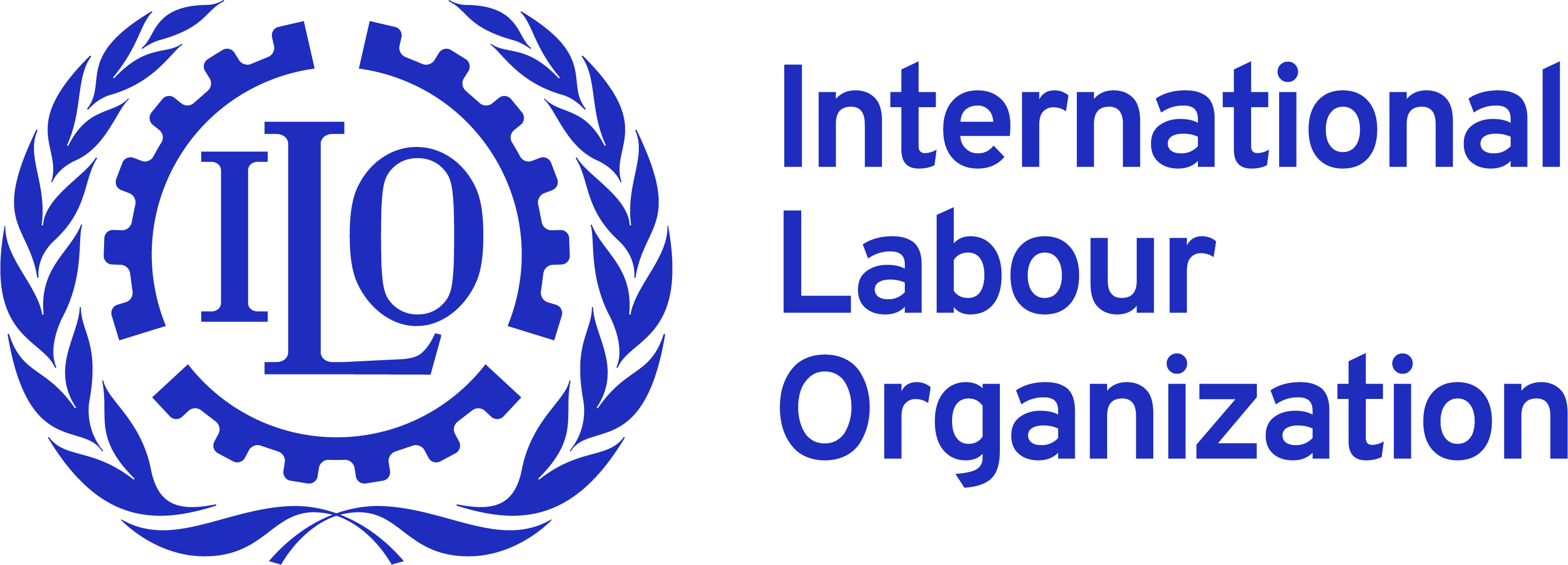
An ILO project — supported by the Netherlands Ministry of Foreign Affairs, in partnership with the Rainforest Alliance — is working to develop new indicators and methodologies for wage setting to strengthen the capacity of government, industry and workers’ representatives to negotiate and set floor wages which take into account the needs of workers and their families in primary agriculture and manufactory supply chains (tea, coffee, bananas and garments) in five pilot countries, Costa Rica, Ethiopia, India, Indonesia and Vietnam. The outcomes of the pilots will be incorporated into a technical toolkit to support ILO member states and social partners on adequate minimum wages.
Ensuring workers are paid a living wage is a key component of a decent work agenda, and to achieve this, the structural causes of poverty wages need to be addressed.⁴
Social dialogue — both in the form of collective bargaining and tripartite social dialogue — lies at the heart of this process. Social dialogue enables enterprises to pay their workers a living wage while also driving the living wage agenda forward by ensuring that improved business performance effectively translates into higher wages.
For social dialogue to be effective, however, an enterprise must be built on a solid foundation of respect for the fundamental rights of freedom of association and the effective recognition of the right to collective bargaining. Together, these constitute enabling rights and essential building blocks for social dialogue and sound industrial relations.
UN Global Compact Principle 3
Companies participating in the UN Global Compact commit to align their operations and strategies with ten universal principles in the areas of human rights, labour, environment and anti-corruption. Principle 3 states that:
“Businesses should uphold the freedom of association and the effective recognition of the right to collective bargaining.”
Enabling the achievement of a living wage
In today’s global economy, the distribution of value along vast and complex supply chains is largely influenced by the pricing and purchasing practices of multinational buyers. New forms of cross-border social dialogue between multinational enterprises and global union federations as they negotiate global framework agreements (GFAs) offer a way to govern this issue. GFAs often result in the creation of monitoring committees that include multinational enterprises, local suppliers, global union federations and their affiliates. These committees function as platforms for conflict resolution and can be mobilized to address the potential tensions between existing purchasing policies of the enterprise on the one hand, and commitments on living wages and decent work on the other.
The COVID-19 crisis further illustrates this tension, with existing social dialogue contacts between local suppliers and trade unions originating as part of a GFA being used to address issues such as the cancelling and non-payment of international orders.
Social dialogue also creates trust. When workers trust their management, they are more likely to openly share information and knowledge on what exactly is happening on the work floor. This transparency gives businesses further opportunities to improve their performance, contributing to the business case for paying a living wage.
Trust also fosters cooperation. Workers will be more receptive to changes aimed at increasing productivity if they believe their concerns will be taken seriously and that they will also be able to enjoy the benefits of greater workplace productivity. Moreover, it is easier to find solutions and compromises to address economic shocks when all affected parties know and trust each other. Overall, the trust that results from social dialogue contributes to the stability necessary to foster productivity and competitiveness.
Businesses also stand to gain from social dialogue as collective voice prevents excessive staff turnover. Concerns and issues that otherwise would result in workers leaving the company can be put openly on the discussion table in order to find balanced solutions. In turn, a more stable workforce implies businesses can keep experienced and productive workers on board and avoid the cost of having to hire and retrain new workers.
Social dialogue can help enable the payment of a living wage to a greater number of workers through multi-employer collective bargaining agreements and tripartite social dialogue. By setting common wage floors, these processes can provide a level playing field, either for specific sectors or the entire economy. This would ensure companies do not have to compete on the basis of the lowest possible wages.
Driving the living wage agenda
Enhancing the capacity of businesses to close the living wage gap is a necessary step in ending poverty. At the same time, a robust mechanism to translate enhanced business performance into better wages for workers also needs to be in place. Social dialogue, with the freedom to organize and the right to bargain collectively as its key pillars, provides such a mechanism.
First, social dialogue allows workers and employers to identify a pathway towards a living wage together. All too often, the reality of global supply chains is one where the minimum wage still reflects deep poverty. Therefore huge gaps between these wages and a living wage persist.
These gaps, however, take time to bridge, which can result in conflicting expectations. Social dialogue can help by delivering a compromise based on gradual but continuous increases of future wage levels.
Second, wages in global supply chains often lag behind inflation and the rising cost of living. As time goes by, the value of wages is gradually but systematically eroded, and the risk of social turmoil increases as a result. Social dialogue can prevent this from happening as issues such as declining purchasing power and the need to correct for it are raised in discussions between representatives of workers, employers and governments.
Third, social dialogue also promotes and protects the effective enforcement of a living wage. This includes, but is not limited to, monitoring the implementation of wage levels agreed upon through a social dialogue process. The effective impact of a living wage on poverty and living conditions not only depends on the wage level, but also on issues such as the correct and timely payment of the wage, the number of working hours involved to secure a living wage, the predictability of working hours so that workers and their households have adequate financial security, and the link to non-wage benefits such as access to social security.
Monitoring and addressing all the aspects of ensuring a living wage requires having “eyes and ears on the ground.” A social dialogue process can empower workers to identify, raise and address the issues they and their fellow workers experience through their representative organizations. Engaging with these actors on the ground is essential in both a national and international context, as due diligence requires multinational enterprises to address any adverse impacts, including across global supply chains.
This content was provided by the Global Deal Support Unit.
A key lesson from existing initiatives is that the actions of individual companies can achieve greater impact if combined across an entire industry or value chain. Many of the challenges involved are structural in nature, and wages are commonly fixed at the national sectoral level. The most effective way to ‘unlock’ these pressures is to take an expressly sector-wide approach — acting across an entire supplier sector in a sourcing country, but also acting in coordination with peer buyers and national constituents. This approach can also serve to reduce supplier concerns relating to their competitiveness vis-a-vis sector, regional or international peers.
Targeted collaboration and coordination do not need to give rise to anti-trust concerns. While any collaborative efforts to achieve living wages in supply chains need to be carefully assessed for their effects and need to be designed with appropriate care and attention, recent legal opinions from the EU suggest that collaboration on sustainability objectives — and achieving a living wage in particular — does not necessarily constitute anti-competitive practice. Further, in some jurisdictions, acting in the public interest can serve as a strong legal defence. However, this is not universal and authoritative legal opinions may differ in some jurisdictions (notably the United States). Nevertheless, in the US and the EU, there is no legal precedent against cooperation to support better wages at the sector level. Legal advice to the Fair Wear Foundation has suggested that these forms of collaboration do not constitute a competition law compliance risk. The Competition Policy International initiative has also published advice for companies on understanding legal risks that apply to them.
There is also value in sharing lessons learned across sectors, building on the experiences from work on wages outside of traditional business networks. Platforms like the UN Global Compact are designed to facilitate this type of cross-sectoral collaboration.
Individual supplier ‘projects’ have tended to be heavily dependent on a particular buyer, or small group of buyers, and have limited sustainable impact in terms of duration and scope. However, some projects have been a rich source of learning about improving worker-management dialogue, working hours, management, gender impacts of wage disparity and developing more strategic HR management in supplier workplaces.
Companies can use positive examples of improved wages in an industry, or even within a single supplier, to help shift the narrative around improving wages and in so doing, legitimize discussions around improving wages. Reinforced by commitments by companies to contribute and mitigate risks for national industry actors, this can help shape decisions that affect the way business responds to competitive pressures, as well as utilizing economic and policy levers to catalyse an enabling environment for improved wage systems.
Wages reflect a range of factors from the creation and distribution of value within the value chain, local labour market dynamics and skills supply, as well as supplier cost competitiveness. As the determinants of low wages may be systemic or structural in nature, interventions to improve wages should aim to address low pay holistically and seek to link up potential areas for collaborative progress at all three levels: the global, the national and the (supplier) enterprise. In terms of possible actions and activities at each of these levels, this means:
Pillar 1
Internal and Peer-to-peer Engagement on Purchasing Practices, Free on Board (FoB) Price and Supply Chain Optimisation
Brand integration of commercial and sustainability functions
Collaboration & shared objectives with other buyers
Adjustments to purchasing practices & sourcing strategies
Sharing good practice
Price (FOB) – MNCs need to understand labour component of unit cost and be prepared to pay more
Pillar 2
Engagement with National/Sectoral Actors on Minimum Wage, Industrial Relations Framework and Social Protection
Supporting effective labour market governance, including social dialogue and bargaining
Exercising positive influence over minimum wage setting processes and outcomes
Advocating for social protection floors
Engagement and building trust with suppliers at sector/supplier industry level, improving ‘sourcing dialogue’
Involvement of local workers’ advocates and representatives
Brand commitments to neutralise competitiveness concerns over raising wages
Pillar 3
Engagement with Suppliers on Pay/Hours Management Systems, Labour Costing, Productivity and Quality, and Dialogue and Worker Voice
Professionalization of labour/HR management, including pay systems
Capacity building on accurate labour costing & forecasting labour needs
Promotion of workplace-level social dialogue
Enhancing process and production efficiency
Support on calculating and paying improved wages
Case Example
The H&M Group — Where to go from here?
One of the earliest — and still-developing — examples of a brand acting both within its supply chain and collaboratively with stakeholders to change the value chain dynamics that constrain wage growth is the H&M Group. The H&M Group’s Roadmap to Fair Living Wages, launched in 2013, involved the following key activities:
Wage Management System Program: capacity building to raise awareness of workers about wages and to support suppliers to develop transparent and progressive pay structures, called wage grids that can support opportunities to move up in the wage scales.
Workplace Dialogue Programme: factory level engagement to promote social dialogue and the representation of workers in wage negotiations.
Sustainability Relationship Management (SRM) status: H&M Group operates a strategic supplier status programme which preferences suppliers according to performance outcomes in their supplier code of conduct. The system reflects the performance of suppliers in areas pertaining to sustainability and business (quality, cost, on-time delivery of goods). For suppliers, this can mean more regular business opportunities, technical support and engagement opportunities from H&M Group. This has allowed H&M Group to incentivize its supply base to improve wages and also to consolidate its working method with suppliers demonstrating higher standard levels.
Purchasing practices: working with their suppliers and with ACT, the H&M Group has been able to commit to ring-fence the labour cost when negotiating prices with its supply base, thereby enabling longer-term relations and purchase orders to have a positive impact on wages.
Collective bargaining agreements: engaging with ACT to promote industry-wide collective bargaining agreements as the preferred approach to drive incremental and systematic wage increases with involvement from all industry parties.
The Roadmap set up by the H&M Group has been independently reviewed by external experts in 2020. Thanks to the fact that a rather large dataset of information about wages paid at the T1 suppliers was available from 2012 onwards, it was possible to carry out an extensive statistical analyses and first results from the review indicate that interventions carried out in the suppliers’ factories, when isolated from other variables influencing wages, such as minimum wages settings, have increased wages on average by 5% in real terms, where intervention models have been implemented to the full extent, including wage grids. While these results look positive, they also show that even as the largest buyer of goods, unilateral company actions still have limitations. The H&M Group is now working on developing an updated approach to the challenge of improving wages in the supply chain by seeking to involve themselves in broader change-influencing platforms to drive a broader impact. The new approach will be based on the independent evaluation of the outcomes achieved in the past years, external stakeholders’ inputs and on the long-lasting experience working with suppliers in many countries, among which include China, Bangladesh, India and Indonesia. Some of the takeaways are:
Companies alone do not have the technical expertise to address all issues themselves, therefore there is a strong role for conveners/ platforms to act as a clearinghouse for ideas and potential solutions to common challenges with achieving living wage commitments.
Increases in pay cannot be sustainably brokered by external intervention. The process of fair wage determination and revision needs to be owned locally, otherwise progress is temporary and easily eroded.
Productivity growth is an essential enabler for increasing wages in a sustainable way for suppliers.
Unilateral improvements to purchasing practices are necessary but may not be enough.
This means national minimum wages are needed to raise the floor, even the playing field and prevent suppliers from facing a competitive disadvantage.
Social protection is crucial to protect livelihoods particularly in fast moving and fast changing sectors where labour needs and labour availability change rapidly. This has become an acute concern in countries like Bangladesh, Cambodia and India in light of COVID-19 where workers have lost their jobs or have had reduced income.
While strong efforts have been made to promote ambitious minimum wages and social protection systems by multi-stakeholders platforms and the ILO, H&M Group has identified a need for further advocacy targeted at national industries and stakeholders to join up efforts around sourcing dialogue between companies and suppliers and social dialogue between suppliers and workers. This means there is space for new platforms of advocacy directed at changing the conversation around ‘labour costs’ at the level of national industries and labour markets. Companies coming together to send a clear message that they will not exit a country if an ambitious minimum wage policy were introduced could foment a stronger enabling environment for new institutions to deliver fair pay and protect workers’ rights.
There is also value in sharing lessons learned across sectors, building on the experiences from work on wages outside of traditional business networks. Platforms like the UN Global Compact Decent Work in Global Supply Chains Action Platform are designed to facilitate this type of cross-sectoral collaboration.


Towards an integrated approach and a new role for companies
Wage issues in supply chains may be complex, but practical key steps for companies are not complicated. The starting point is to understand what wages look like in your supply chain, prioritize what your company can do directly, in collaboration with its suppliers, and what steps require engagement and coordination with peer companies and other stakeholders.
The results chain below shows a suite of company and stakeholder actions that, under the right circumstances, can precipitate positive effects in supporting sustainable wage growth.

Building blocks of effective strategies to improve wages in supply chains
This section provides foundational guidance on six key building blocks of an integrated strategy on improving wages within supply chains. The guidance is supported by recent best-in-class examples of how companies have worked to build a strategy to implement their living wage commitments.
Measuring the gap between effective wages paid in supply chains and living wage benchmarks is an important step for many retailers, companies and multi-stakeholder standards initiatives toward taking action on living wages in global supply chains. At its core, this exercise depends on a fair and careful comparison of two elements:
Data showing what workers are actually paid (effective wage data) on a guaranteed basis, for standard working hours, and
A credible living wage benchmark that represents local living conditions and living costs
Organization
Description
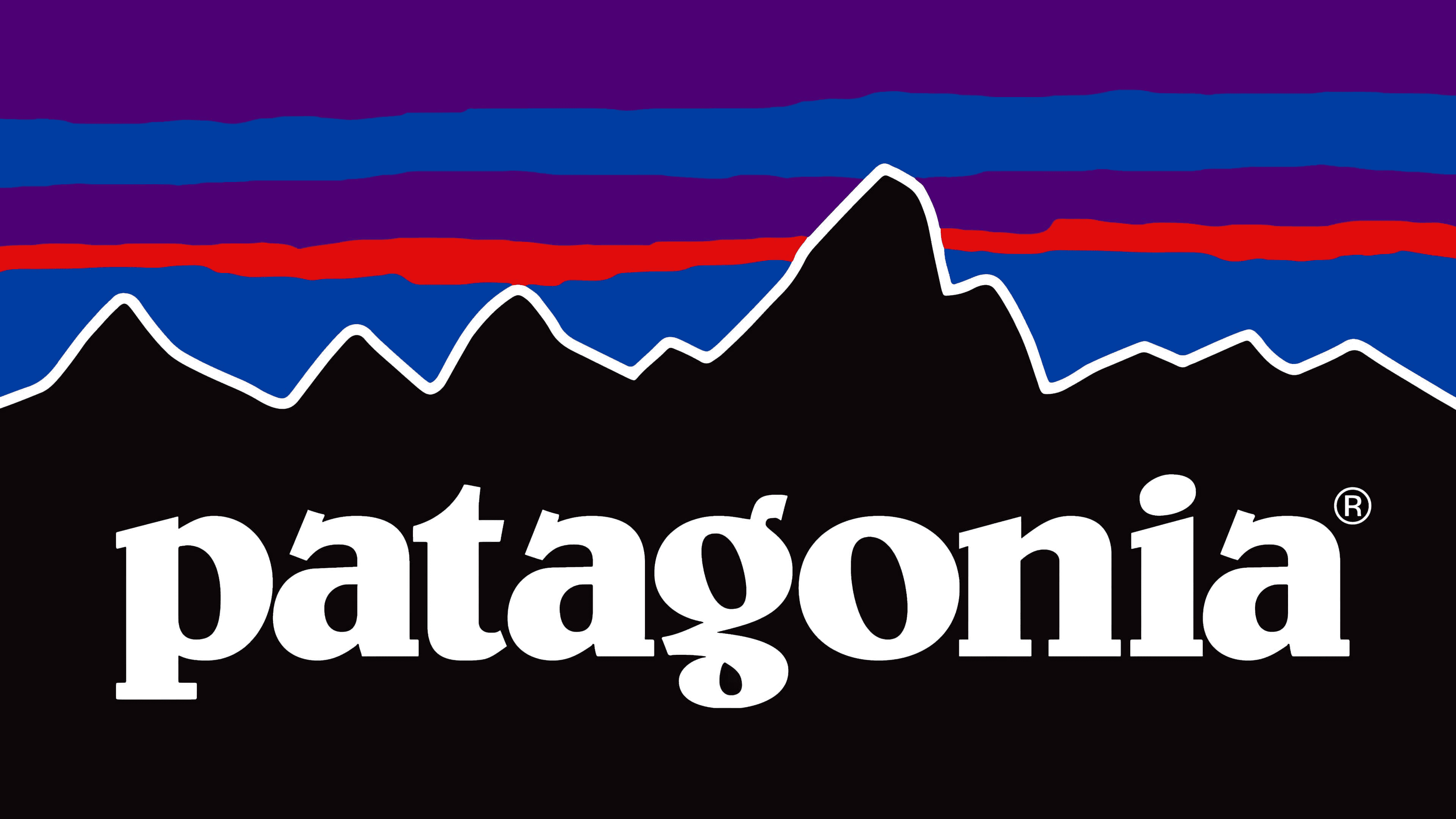
Patagonia has selected the Martha and Richard Anker Living Wage Methodology as the living wage value to target as a goal within its countries of operation. The company values the rigor of the field calculation methodology and the detailed explanations of assumptions and caveats, transparency which is valuable for securing buy-in to the process from suppliers. The company directly funded an Anker living wage study in Nicaragua through the Global Living Wage Coalition.

Unilever will ask its suppliers to adopt independent, commonly recognized and credible methodologies for measuring the living wage gap (in line with the IDH developed set of criteria), where they have been developed and validated by external experts and/or other stakeholders. Unilever is working with independent benchmarking and vetting process experts to qualify methodologies as credible, acceptable and fit-for-purpose. The four main principles to make living wage measures operational are that they should be reliable, scalable, transparent and regularly updated.
Living wage benchmarks must be defensible, explicable, and preferably recognizable to suppliers and workers. While different methods and approaches to living wage benchmarking exist, there is a trend towards harmonization, an agenda which is supported by IDH’s initiative to recognize benchmarks that meet key credibility criteria (see below):
The Sustainable Trade Initiative (IDH) has developed a Process and set of Criteria for Recognizing Living Wage Benchmark Methodologies
Estimate living wage based on data collected through field-level research, online surveys, national statistics and/or modelling. Collected data should be representative of the location of the living wage benchmark.
Measure the cost of living of a typical family in a region. A typical family in a region means that the size of a family is estimated based on regional (or national) data through family size data or birth-rate data.
Include in the cost of living, the cost of food based on requirements for good nutrition, housing, education, healthcare, household goods, communication, transportation, personal care, and a small margin for unexpected events.
Factor in the expected number of working adults in a family by dividing the total cost of living by 1+ the employment rate.
Provide the gross living wage estimate, which is the gross pay required to ensure sufficient net take-home pay to cover the cost of living. This is necessary because net living wage would not account for statutory deductions from pay (such as income taxes, social security taxes, and union fees) which will reduce the take-home pay and money available for day-to-day expenses.
Are city/region-specific or at least account for urban and rural differences.
Must have no inherent conflicts of interest. Methodologies must have sufficient distance from funding sources to maintain integrity. In addition, individual benchmark results must not be influenced by the funding source.
Publish a clear and consistent methodology for data collection and calculation elements.
Update the estimates yearly for inflation. Estimates can be updated for up to 5 years (considering local circumstances) before a new benchmark is needed.
A list of recognized methodologies can be found here.
Living wage benchmarking requires collecting and analysing actual supplier wage data as a comparator to the benchmark. The key objective to compare like-with-like (monthly to monthly, gross to gross, and using the same underlying assumptions about working hours. The IDH Salary Matrix for a Living Wage V.2 is a tool designed to collate the necessary information from a target workforce to support the comparison of total remuneration (wages, bonuses and in-kind benefits) with credible living wage benchmarks. This is the approach adopted by Richard Anker and Martha Anker in their work Living Wages Around the World – Manual for Measurement, and is the basis of the approach deployed by the Global Living Wage Coalition .
Companies are advised to use tools and systems which not only calculate the wage gap but also provide a primer for the next steps to take to address the gaps. Multi-stakeholder platforms such as Fair Labor Association, IDH, Fair Wage Network and Fair Wear Foundation all provide tools to support companies with the foundational steps but also encourage the sharing of general approaches and learnings to help companies set and meet targets.
Organization
Description

ALIGN is a guidance tool for agri-food companies aiming to reduce complexity around the topic of living wage and living income drawing on the leading methods and successes developed by experts on improving wages. The ‘action process’ is set out as a step-by-step guidance on understanding pay gaps, assessing risk, choosing implementation approaches and monitoring outcomes. ALIGN is developed by the Living Wage Lab (Hivos and Fairfood) and Rainforest Alliance, with support of the German Federal Ministry for Economic Cooperation and Development, implemented by GIZ. ALIGN's work is supported by the Living Income Community of Practice, the Global Living Wage Coalition, Fairtrade International and the Sustainable Trade Initiative (IDH).

The FLA has developed a suite of innovative wage data collection tools which are available to companies in the manufacturing sector. The FLA's tools use a scalable and user-friendly methodology to collect wage data from factories and generate average worker wages across occupations and seasons. Companies upload their data into an online Fair Compensation Dashboard which automatically maps their factories' wages against internationally recognized living wage benchmarks, union and worker demands, and legal minimum wages. Companies use the dashboard to identify regions or factories in which the living wage gap persists, set internal priorities for action, and calculate the actual costs involved in reaching a living wage. They can also compare factories within their own supply chain and measure wage changes over time. The FLA’s fair compensation tools utilize the Anker methodology to calculate and analyse average net wage and were developed in consultation with of a working group of living wage practitioners and experts.
Country Net Wage Analysis Conducted by the Fair Labor Association: Example of Bangladesh and Vietnam
Senior-level leadership on supply chain wages is essential. Sustainability teams will need a strong mandate from company leadership to engage internal stakeholders and buyers to drive the agenda internally. Most of the strongest examples of effective action on wages have been publicly endorsed or indeed initiated by top management. As some of the leading companies working on this issue have noted, it is important that the leadership of the company truly believe that wages for workers in the supply chain are important. It will be however important to ensure support and buy-in at all levels of management within the company to ensure a successful implementation.
One of the strongest tools to build on is a link to the core values of the organization. This will typically also be linked to long-term visions and business strategies such as ‘future-proofing’ and building resilient supply chains. In many cases, engaging senior internal stakeholders will be facilitated by analysis and benchmarking of supply chain wages to demonstrate the scale and prevalence of concerns relating to the adequacy of wages in supply chains.
Organization
Description

Patagonia’s Environmental and Social Responsibility department convened a cross-departmental Task Force that meets quarterly, comprised of the company’s Chief Operating Officer, VPs, and representatives from purchasing, marketing, quality and others. This group is responsible for collectively driving the living wage commitment within the organization and is a key mechanism to integrate the firm’s living wage commitment with their commercial practices.

Unilever CEO Alan Jope announced at the launch of the 2021 living wage commitment that: “Too many people are not paid enough. They receive an unfair share of the value they create — and that must change… The delivery of this commitment is not going to be easy; we do not have all the answers and, quite honestly, the scale of the challenge makes me nervous. I am, however, convinced it is the right thing to do both morally and economically and I take comfort in the fact that we have friends in Patagonia, L’Oréal, Nestle and others who have already started on this journey."

Schneider Electric’s leadership delivered a company-wide mandate to integrate the company’s Decent Work commitments (which include payment of fair wages) into its core business strategy. The company’s annual incentives for its leaders and employees are linked to the Group’s strategic sustainability roadmap: Schneider Sustainability Impact (SSI). The SSI features 11 programs, including a commitment that 100% of its strategic suppliers provide decent work to their employees.

On International Human Rights Day on 10 December 2020, the Group launched a training campaign on Human Rights for the second consecutive year to increase employee awareness on this issue. On this occasion, the Chairman and Chief Executive Officer addressed all employees and restated the importance of the Group’s commitment, by giving the example of L’Oréal’s Living Wage commitment.
Having assured senior-level buy-in, translate an accurate analysis of supply chain wages into a clear, risk-focused programme of action, backed up by monitoring and measurement to ensure progress. Many companies will not be able to work across their entire supply chains at once and then when decided, it needs to be clear what options are on the table in terms of actions. An example implementation process that integrates the building blocks discussed in this section is included below:






Strategic sequencing of interventions — which suppliers to work with first
Risk, saliency and leverage considerations
Opportunity to create ‘demonstration effect’
Engage procurement
Consider how to incentivize constructive engagement with suppliers
Scope opportunities to support suppliers
Adjust purchasing practices
Consider supply chain structure / potential for consolidation
Support suppliers with foundational steps (HR management, understanding productivity / wages link)
Scope to coordinate with other buyers
Engage legal re: competition law concerns
Safeguarding against unintended consequences (increased work intensity)
Collaborative opportunities with other companies
Joint letters to industry associations, ministries or other influential functions
Follow through on commitments with action / ensure that the company does not act counter to these commitments
Wage gap assessment
Monitoring KPIs and progress towards other milestones



Strategic sequencing of interventions — which suppliers to work with first
Risk, saliency and leverage considerations
Opportunity to create ‘demonstration effect’
Engage procurement
Consider how to incentivize constructive engagement with suppliers
Scope opportunities to support suppliers
Adjust purchasing practices
Consider supply chain structure / potential for consolidation
Support suppliers with foundational steps (HR management, understanding productivity / wages link)



Scope to coordinate with other buyers
Engage legal re: competition law concerns
Safeguarding against unintended consequences (increased work intensity)
Collaborative opportunities with other companies
Joint letters to industry associations, ministries or other influential functions
Follow through on commitments with action / ensure that the company does not act counter to these commitments
Wage gap assessment
Monitoring KPIs and progress towards other milestones
Consistent with human rights commitments, companies should consider the risk of low pay when selecting which suppliers to prioritize. The UNGPs envision that companies should prioritize suppliers and markets for intervention according to saliency. This suggests that companies will need a diagnostic framework to evaluate the risk of low pay in different supply chains.
Many companies with a labour-intensive production supply chain in emerging and developing economies are likely to see living wages as among their most salient risk issues. Note however that, in the case of agribusiness value chains engaging smallholder agriculture, living income for farmers may be the most salient risk, a challenge with similar goals but requiring a different approach.
Organization
Description

Unilever has pledged to specifically focus on the most vulnerable workers in manufacturing and agriculture” (working with stakeholders toward creating systemic solutions to raising living standards through purchasing practices, collaboration and advocacy wherever [they] operate).

L’Oréal is prioritizing key ingredient supply chains to support implementation in its extended supply chain as well as among its manufacturing suppliers. It has identified certain supply chains and regions as ‘hotspots’, such as Mica in India. For these, their strategy is to work with various fora that position themselves to work collaboratively to address low pay. The Responsible Mica Initiative (RMI), for instance, has been working on the issue of fair wages & fair income in the Mica supply chain.

Patagonia has worked with researchers at the Massachusetts Institute of Technology (MIT) to develop an approach that allows the company to scale its engagement programme on living wages according to the level of the gap with the applicable Anker-methodology living wage benchmark. For companies with higher gaps, Patagonia will work with the suppliers to implement an overhaul or implement a benefits system that bridges the gap in the short term. For those with a narrower gap, Patagonia will consider projects aimed at creating mechanisms and processes that shift more resources to workers’ pay without placing an undue burden on suppliers. Lighter touch suppliers would involve technical support on payment processes and supporting small adjustments to HR management systems.
Companies can, early on, seek to build momentum behind the strategy through creating and demonstrating early successes. Risk level can be combined with leverage and feasibility considerations to identify not just the highest risk suppliers but those where there is optimal scope for positive impact, which could then generate a demonstration effect. An example might be prioritizing work with suppliers in countries where wage improvements are already part of the national conversation and where brand intervention can lend credibility to wider efforts to transform labour market institutions. Creating an effective demonstration effect may depend in part on ensuring that early supplier selections do not disproportionately focus on least developed countries, where the barriers to raising wages are typically higher.
Define a hierarchy of interim goals the company is trying to achieve (such as improved supplier labour management practices) and develop a process to appraise and monitor overall progress towards achieving a living wage. It is key here is to understand what the pathways of change look like: while structural changes are likely to imply a long-line, intermediate outcomes should be identified which are consistent with — and do not impede — longer-term aims, such as fostering forms of worker-management dialogue which can lay the ground for more substantive negotiation in the longer-term. While monitoring progress on actual wage outcomes in view is key, process indicators are important to ensure that the systems are being put in place which can sustain and govern ongoing improvements to wages.
Organization
Description

Since 2018, Schneider Electric is working with an independent advisor — BSR — to implement its living wage commitment. Schneider Electric has initiated a global annual process to analyse wage levels and employment practices against local living wage standards set by BSR. By 2025, Schneider Electric commits that 100% of its employees are paid a living wage each year.
Empower and train procurement teams to adopt sustainable practices that will impact their suppliers’ capacity to advance decent work. Procurement teams have a key role to play in creating sustainable supply chains but can often be disconnected from the sustainability function of the company. It will be crucial to incorporate social sustainability objectives in sourcing performance metrics. As long as sourcing managers are only rewarded for cost reductions and social sustainability wins are not taken into account, it is difficult to see how the improvement of working conditions for supply chain workers (including improved wages) can be achieved. The Decent Work Toolkit for Sustainable Procurement, developed by the UN Global Compact Decent Work in Global Supply Chains Action Platform, can help companies, procurement professionals and suppliers to develop a common understanding on how to advance decent work through purchasing decisions and scaling up efforts to improve lives around the globe.
Involve and enable the procurement team to embed living wage considerations within their working processes. The first universal objective, common to all companies is achieving a closer integration of commercial functions with supply chain living wage commitments. It is crucial to closely engage and work with procurement colleagues to understand their views and concerns in relation to how purchasing practices can affect sustainability outcomes such as wage levels and working hours, and also to share knowledge on how purchasing decisions can affect outcomes for workers in supply chains. Pending decisions on the nature and form of supplier expectations for a living wage, there are a range of technical elements that will need to be covered (open-book costing, labour minute costing, ring-fencing labour costs) to ensure that commercial functions can effectively support public commitments to achieving a living wage in the supply chain.
Clarify what is on and off the table in terms of potential ‘purchasing practices’ variables that can be deployed to support joint work with suppliers to raise wages. Purchasing practices are understood here to include the range of ways in which commercial processes and decisions led by buyers can impact outcomes for workers: accounting for labour costs within price negotiations, timing and terms of payment, forecasting and planning, duration and commitment to trading relationships, the proportion of offtake and responsible exit.
Mapping, consolidating and shortening supply chains may be crucial to living wage efforts. A company’s ability to identify and act on achieving living wages in its supply chain depends critically on knowledge of, and relationships with, suppliers. Moving beyond the conventional view, several leading brands have strategically moved to consolidate and shorten supply chains — buying more from fewer suppliers, with fewer intermediaries. This has positioned these brands, both in terms of quality of relationships and commercial leverage, to focus efforts more effectively on working with fewer suppliers on wage issues. As noted above, the constructive pressure of meeting living wage commitments can foster a strategic shift in business which force innovation and bring new gains — including more resilient supply chains.
New research showing the direct relationship between purchasing practices and wages
New research carried out by the ILO in cooperation with ETI provides new empirical evidence on wages in global supply chains through three complementary sources of information and data: a global suppliers’ survey (with data from nearly 1,500 suppliers), 31 qualitative case studies in five sourcing countries (Bangladesh, China, India, South Africa and Turkey) with both management and workers’ surveys; and finally — to close the loop — a global buyers’ survey (with data from 103 buyers). These three sources of information show for the first time how purchasing practices influence suppliers’ behaviour in terms of wages, working time, temporary work and outsourcing.
In terms of a correlation between purchasing practice and labour conditions, suppliers who reported to have accepted a number of orders that did not meet their costs were found to be paid 15% to 20% less than suppliers who succeeded in negotiating prices at or above production costs. Interviews of suppliers’ managers during the qualitative case studies confirmed that their difficulties to pay wages and their capacity to increase wages were directly influenced by the prices set by the buyers.
Poor order planning and forecasting were also found to be associated to lower wages (by 10%), probably because it may lead to extra costs for the suppliers in terms of sampling, transportation and unexpected delays.
Results are also presented for the first time on health and safety: 35% of suppliers reported, in particular, that ‘too short lead times’ led to an increase in workplace accidents, while 81% of them contended that it increased the amount of stress at the workplace.
Purchasing practices and the type of relationship between the buyers and suppliers can also influence suppliers’ propensity to rely on temporary workers and on sub-contractors. Accepting ‘prices below the cost of production in order to keep a competitive advantage’ was found to be associated with a 23% increase in the number of temporary workers probably because it represents a way of cutting production costs, and for some suppliers a way to push some competitors out of the market by accepting lower prices.
The buyers’ survey results confirmed many of the purchasing practices described by suppliers with 85% of buyers who admitted that price negotiations and in particular prices that turn out to be below suppliers’ production costs would directly impact wages.
At the same time, a number of good practices were identified in the case studies with buyers trying to improve their purchasing practices. Some tried to build a long-term relationship with suppliers, a factor that helps, according to the ILO author, to ‘rebalance suppliers’ bargaining position’.
This work is providing new and unique empirical evidence in this area that remains relatively underexplored by the economic literature. It will hopefully stimulate further research and more surveys to confirm the intimate relationship between purchasing practices and working conditions in global supply chains, especially in the new context of the COVID-19 crisis.
Written by D. Vaughan-Whitehead, At the core of global supply chains — The impact of purchasing practices on wages and working conditions, Edward Elgar in partnership with the ILO, 217 pages, forthcoming 2021.
Companies can increase leverage with suppliers through longer-term buying commitments. Whether through a defined strategic supplier programme or as a more informal risk-sharing arrangement with individual suppliers, companies should build a foundation of trust and constructive, open engagement.
Define an approach to equitable cost-sharing — be prepared to pay more to achieve results. Companies will need to be prepared to conclude purchasing terms (and prices) that support a longer-term engagement and enable longer-term investments on the part of suppliers. The central purchasing factor — Free on Board (FOB) price — cannot be left out of the equation.
Organization
Description

Securing engagement and ownership of a company’s social commitments are essential to moving the agenda forward internally. In the case of L’Oréal, following a positive experience with Human Resource professionals within the company during the roll-out of their living wage commitments to their direct workforce, the procurement teams proactively sought out the Human Rights department for guidance on how to implement the company’s commitment within their supply chain. The ‘ownership’ of living wage commitments by L’Oréal buyers suggests that gaining strong buy-in from internal stakeholders does not always need to be an uphill struggle and that good experiences from internal implementation of living wage commitments can potentially serve as a strong and positive precedent for a company to build on.
Human Rights and Procurement are now together working to develop plans for how the company will approach benchmarking, understanding living wage gap analysis, as well consolidating their position on the various definitions and methodologies that exist. The resulting implementing guidance will have the benefit of direct input from procurement teams.

The Decent Work Toolkit for Sustainable Procurement was developed by the Decent Work in Global Supply Chains Action Platform which consists of participating companies of the UN Global Compact, Global Compact Local Networks as well as partners, ILO, UNICEF, and Global Deal. Includes learnings, training exercises, practical case studies, business implications and frequently asked questions.
The guidance is aimed at companies looking to understand how to engage their suppliers on the question of what impact buying practices have had and who want to understand what approaches can be expected to work to strengthen the position of buyers to implement decent work commitments within their supply chains.
Position the brand as a partner for suppliers in achieving sustainable and improved wages. Suppliers can create and share value with workers through enhancements to people management, worker engagement and process efficiency. But experience and existing practice suggests that suppliers will require considerable engagement, support and guidance to ‘buy in’ to the living wage concept and the business case for investing in their human capital, to understand their role in achieving this and to affect the business systems upgrading necessary to sustain what may be significant increases in labour costs.
Consider how the brand can offer support for suppliers, including through providing technical guidance, experience-sharing as well as co-investment and risk-sharing. Cooperation on wage enhancement may require support for buyers to gain a more detailed and accurate understanding of their cost base, and the role of wage and non-wage labour costs within this cost base.
What is at stake is a fairly fundamental mindset shift: from a perception of labour as a cost to be minimized to an understanding that, in a competitive and rapidly developing business context, people are the central asset in which to invest. This means that wages — alongside worker-management dialogue, skills development, and more professional HR management — are a key element in more strategic incentivisation of work effort, necessary to spur improvements in quality and productivity, as well as greater value creation.
The overarching balance to be struck in implementation is between (enhancing) supplier efficiency and labour management practices and (modifying) buyers’ purchasing practices. This may also require (a form of) open-book transparency between companies and suppliers in a way that is novel and demanding for buyers and suppliers. This degree of cooperation and information sharing can only be developed over time. There may also be a need to incorporate a broader process to set expectations related to transparency at the tendering and onboarding stage for new suppliers or suppliers whose contracts are up for renewal.
Boosting productivity is a central opportunity for increasing wages and conversely, low productivity is a barrier to wage growth. Equally, low wages may be a disincentive for suppliers to invest in productivity-enhancing technology. However, while some gains in value creation that can be passed on to workers could be made available through improvements in supplier efficiency and management capacity, it should not be expected that this will cover the margin necessary to bridge the gap. Further, an emphasis on productivity as an enabler for wage improvements triggers a responsibility to establish safeguards against unintended consequences of rapid gains in productivity such as increases to work intensity that could lead to excessive over time or health and safety concerns, or rapid job elimination.
Some form of ‘risk underwriting’ may be required for suppliers embarking on living wage efforts: this could include committed long-term purchasing agreements, guaranteed minimum pricing/minimum purchase volumes or financial support contingencies.
It is constructive to explore with suppliers how addressing poverty wages can enable upgrading toward higher value creation which can itself sustain living wages. Suppliers’ ability to innovate depends crucially on their ability to adapt their production processes and the adaptability of their employees. Investing in workforce skills development can sustain a virtuous cycle of enhanced productivity leading to returns which can sustain higher wages.
Upskilling
Firms’ ability to innovate depends crucially on their ability to adapt their production processes and the adaptability of their employees. Investing in workforce skills development can sustain a virtuous cycle of enhanced productivity leading to returns that can sustain higher wages.
Enhancing Production Processes
Improvements in efficiency of workflow, line setup and balancing, down-time, planning processes, product quality-related issues, flow of materials to and from production lines and scope for superior technology.
Investment in Business Upgrading
Product upgrading: moving into more sophisticated product lines that have increased unit values. Functional upgrading: acquiring new chain functions, such as in-house packaging, design or marketing; or Cross-sector upgrading: applying the competencies acquired from a particular chain function.
Extract and record the lessons from early engagements, particularly where they have resulted in shifts in workforce retention, engagement and motivation leading to quality and productivity outcomes that have supported a supplier’s business fundamentals.
The end scenario should be for suppliers to ‘own’ and embrace the efforts they have taken to raise wages and hopefully use it to gain an advantage with potential future buyers.
Organization
Description

The company’s approach to working with suppliers is to first identify entry points where suppliers’ challenges can be mitigated through participating in an engagement with Patagonia that also in turn delivers a living wage for factory workers. This requires an initial scoping period where these key opportunities are mapped out and goals set towards meeting living wage commitments are also pegged to benefits for the suppliers’ business.

Inditex works within its clusters to foster the creation of spaces for dialogue for suppliers and workers that encourage the reaching of agreements in the textile industry regarding wages. The work with IndustriALL Global Union under the Global Framework Agreement, that both entities signed in 2007 and renewed for the last time in 2019, is one of Inditex’s main tools to promote social dialogue and ensure the respect of the rights of Freedom of Association and Collective Bargaining within its supply chain. These activities include educating workers on their rights, supporting them in electing representatives, and encouraging sectorial collective bargaining with initiatives for workers, employers and unions like the ACT initiative. This approach when working with employers and worker representatives includes to find synergies between the objective to support social dialogue and the employer’s business case for doing so.
Work with suppliers to ensure the basic enablers for better pay systems are in place, including social dialogue. Companies can leverage existing commitments with suppliers to ensure their suppliers exhibit strong labour management capabilities, including:
Accurate payment of wages according to contracts, legal regulations and existing collective bargaining agreements, including full documentation of wages paid and hours worked.
Implementing human resources policies and processes to ensure competitiveness, worker motivation and positive workplace environment, supported by training of relevant managers and supervisors.
Developing a progressive and coherent pay system that rewards workers according to their skills, education, performance andexperience, while ensuring that there is no discrimination in pay terms on the basis of factors irrelevant to workers’ ability to do their job, such as gender.
Developing skills-based reward; that is, a pay system which clearly reflects skills requirements for different occupations can help ensure transparent and equitable classification and payment of workers, and can respond to challenges in maintaining wage differentials where meeting a living wage serves to increase the wages of the lowest-paid.
Ensuring pay systems are adapted to cover all workers — including third-party / outsourced / contract workers (potentially though including wage provisions in service contracts) — and reward work effort and skills fairly, without discrimination, on basis of legal / basic working hours.
Regularly updating wages in light of living costs.
Social compliance assurance and engagement activities can be used to promote social dialogue at the supplier workplace level to ensure that wages and working conditions are influenced by networks of worker representatives, worker committees, enterprise councils and trade unions. Engagement with local stakeholders — including trade unions can be valuable to this end.
Encourage and incentivize digitisation of supplier wage payment. Where workers are currently paid in cash, explore possibilities with the supplier to move to full digitisation of worker salaries. A computerised payroll system and payment through bank transfer can support the supplier business to more easily track outgoings related to labour costs and manage deductions and contributions easily. The Better than Cash Alliance is a partnership, based at the UN, of governments, companies, and international organizations that works to facilitate digital payments as a means of promoting financial inclusion.
Explore and encourage potential consolidation of elements of pay. ‘Living wage’ refers only to standard pay for a regular working week and does not include variable elements or bonuses which are not guaranteed or cannot be reliably anticipated by workers. The aim in working to raise wages should be to contribute to stability and income security for workers. It is therefore important to position any supplements to wages in terms of increases to the basic wage rather than one-off payments or bonuses. Consolidating variable elements of pay into the standard, basic wage can be an important means for suppliers to embark on enhancing wages.
Document progress. It is important to properly document and collect verifiable information in relation to efforts to pay living wages. Such documentation can support verification and assurance processes. In many contexts is not feasible to expect a living wage target to be implemented straight away. Closing the gap will tend to require stepwise implementation and time.
Take steps to establish safeguards against unintended consequences for workers, specifically in terms of work intensity. Reiterate the working conditions requirements in supplier codes of conduct. It is crucial to ensure that wage increases are not achieved through intensification of working patterns, including:
Unrealistic production targets (including incentivisation through bonuses)
Increases in working hours or overtime (potentially circumventing legal norms through practices like splitting shifts)
Identify scope to increase leverage through coordination with other buyers. Where a company buys a minority (even if significant) of product from a supplier, building credible responses require new forms of coordination and partnership between buyers. Collaborative initiatives — including IDH, ACT, FWF and FLA — can drive systemic change at both supplier-industry and national government levels and can greatly inform and enhance individual company action on living wages, particularly in terms of exercising positive influence over minimum wage setting and scope for (sectoral) collective bargaining.
Look for opportunities to join up your work within your own supply chain with larger initiatives at sectoral, national levels. Experience has shown that individual advances with individual suppliers can have limited impact if they are not reinforced by broader change. Companies can play a number of roles here. Therefore, multinationals can usefully focus efforts on sharing examples of how positive, lasting impact on pay systems can be achieved. This can influence policy discussions that could influence working conditions and wages. Big change can start small and demonstrating that there is another way of successfully doing business at enterprise level can be an important driver of change at national, policy level.
In addition to the collaborative initiatives mentioned above, there are also emerging discursive platforms to share lessons and good practices.
Organization
Description

The Business for Inclusive Growth (B4IG) Platform, the first global initiative bringing together around 40 CEOs and governments to accelerate action on reducing inequalities and promoting inclusion has announced a new Workstream on Living Wage co-led by L’Oréal and Unilever. The Workstream is centred on the B4IG Roadmap for an inclusive recovery. Through this platform, businesses can share good practices, co-develop and explore new solutions, and develop metrics to better evaluate the ultimate impacts of living wage commitments by companies.

The STAR Network, the first pan-Asian Network of Producer Associations has, in collaboration with various global stakeholders including GIZ FABRIC, the International Apparel Federation (IAF) and the Better Buying Institute, launched an initiative to create a safe space for manufacturers to jointly draft a set of minimum expectations related to global apparel and footwear brands’ purchasing practices (including payment and delivery terms). The premise of this initiative is a recognized need for suppliers and buyers to strengthen their relationships to support recovery from the COVID-19 pandemic.

The Better Buying initiative sets out to improve the foundations of the buyer-supplier relationship.
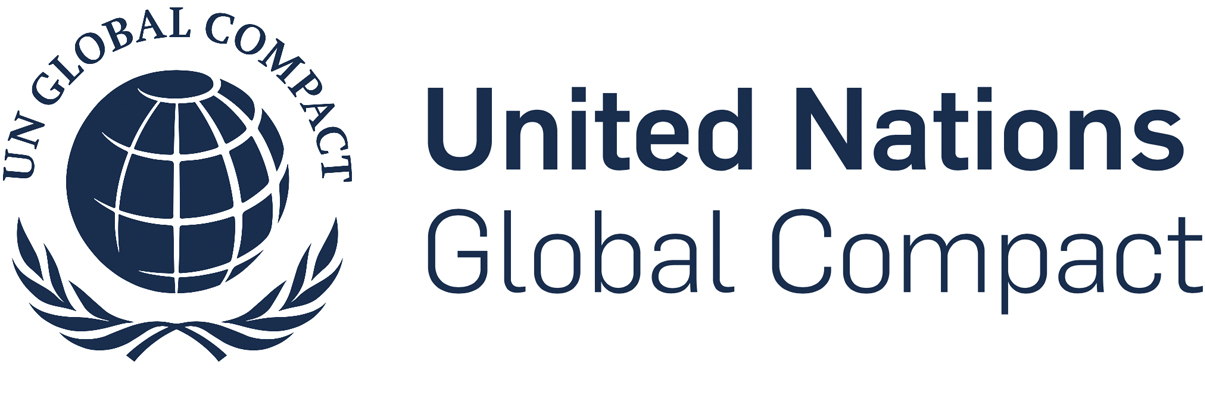
The United Nations Global Compact launched the Action Platform on Decent Work in Global Supply Chains in 2017 to build an alliance of companies, Global Compact Local Networks and partner organizations who are committed to respecting human rights and labour rights at work by leveraging their supply chains and taking action to address decent work deficits. This platform builds the case for advancing decent work in global supply chains through sustainable procurement practices and engagement with suppliers and demonstrates how labour rights and human rights are critical for achieving the UN Sustainable Development Goals (SDGs).
Coordinate in engaging decision-makers in sourcing countries and sectors. Company influencing strategies to drive change and support institution building necessary for sustainable improvements to pay systems will be more powerful if they reflect the shared views of a significant contingent of companies operating within a sector. Collaborating within multi-stakeholder initiatives, membership organizations and other platforms established to advance the agenda on understanding living wage as a key opportunity to support systemic change.
Organization
Description

Inditex’s implementation model emphasizes the importance of the sector level. Inditex’s supply chain is organized around 12 clusters of production in Spain, Portugal, Morocco, Turkey, India, Pakistan, Bangladesh, Vietnam, Cambodia, China, Brazil and Argentina (comprising 97% of total production), These clusters are spaces for cooperation and dialogue, the purpose of which is to foster a sustainable production environment in a strategic geographic area and within a framework of compliance with human rights and environmental responsibility/sustainability. One of its main aims is to foster constructive dialogue with employers and workers at factory and sectoral level with a view to planting the foundations for sector-wide bargaining on wages and, in consequence with the promotion of social dialogue and the respect of the right of freedom of association. In this sense, the Global Framework Agreement that the company has with IndustriALL Global Union and its proactive role in ACT are key tools to foster collective bargaining at a sectoral level to achieve living wages.
There is scope for companies to voice support for ambitious minimum wage setting and strong social protection systems. Lessons from the work of H&M Group and other leaders have highlighted the vital importance of an adequate national minimum wage (and mechanisms to revise in light of changes in costs of living) as well as a social protection floor. Companies can, and are, expressing support for ambitious minimum wages and universal social protection systems. This can take the form of joint letters to industry associations, ministries, or other influential functions. A key example would be the letter sent by the Fair Labor Association and other multi-stakeholder groups to the Tamil Nadu Wage Commission to press for an ambitious minimum wage revision that reflects the needs of workers in their families, the general level of wages in India, inflation, social security benefits, the relative living standards of other social groups and the relationship between productivity and employment levels. H&M Group has also chosen to submit a separate letter, reviewed by the ILO, in support of improved wage setting.
Back-up collective calls with collective action and commitment. Suppliers and regulators often fear that taking steps potentially seen by buyers as adding to the cost of doing business will affect their competitiveness. It is therefore vital that companies assuage these concerns by delivering a message that companies are pledged to continue to support the industry and to absorb any increases in cost as a result of higher wage bills, including through higher prices.
Reinforcing brand commitments to long term sourcing from an industry can support trust building and good faith amongst partners in the industry. Companies that wish to see new investments in institutions (or efforts to create new institutions) can offer to contribute financially or provide technical support. At a more basic level however, suppliers and local stakeholders will want to know that buyers will not exit the country following an increase in cost, and that their partners in the supply chain are in this with them for the long haul.